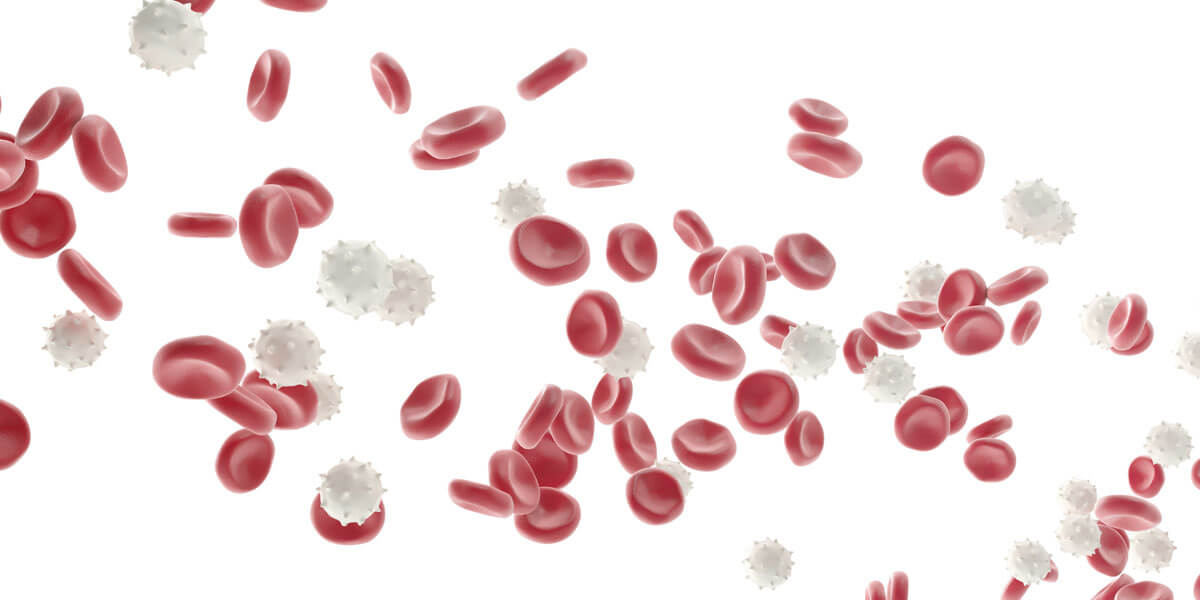Platelet Count 130: Causes, Symptoms, and Treatment of Low Platelet Count
What are the main causes of a low platelet count. How can thrombocytopenia be diagnosed and treated. What are the symptoms of having a platelet count of 130.
Understanding Platelet Count and Thrombocytopenia
A platelet count of 130,000 per microliter of blood is considered low, falling just below the normal range of 150,000 to 450,000 platelets per microliter. This condition, known as thrombocytopenia, can have various causes and implications for your health. Let’s explore the intricacies of this blood disorder and its potential impacts on your well-being.
What is a normal platelet count?
A normal platelet count typically ranges from 150,000 to 450,000 platelets per microliter of blood. Platelets, also called thrombocytes, are essential for blood clotting and preventing excessive bleeding. When your platelet count falls below 150,000, it’s considered thrombocytopenia, which can range from mild to severe depending on the exact count and underlying cause.

Causes of Low Platelet Count
Thrombocytopenia can result from various factors, broadly categorized into three main mechanisms:
- Decreased platelet production in the bone marrow
- Increased destruction or consumption of platelets in the bloodstream
- Abnormal sequestration of platelets in the spleen
Bone Marrow-Related Causes
The bone marrow is responsible for producing platelets. Several conditions can interfere with this process:
- Cancer: Leukemia and lymphoma can damage bone marrow and stem cells.
- Aplastic anemia: This rare blood disorder causes the bone marrow to stop producing enough new blood cells.
- Toxic chemical exposure: Pesticides, arsenic, and benzene can impair platelet production.
- Certain medications: Some drugs, including diuretics and certain antibiotics, can suppress platelet production.
- Alcohol abuse: Excessive alcohol consumption can temporarily lower platelet counts, especially when combined with poor nutrition.
- Viral infections: Chickenpox, mumps, rubella, and HIV can affect platelet production.
- Genetic conditions: Disorders like Wiskott-Aldrich and May-Hegglin syndromes can cause chronically low platelet counts.
Increased Platelet Destruction or Consumption
In some cases, the body produces enough platelets, but they are destroyed or used up too quickly:

- Autoimmune diseases: Conditions like immune thrombocytopenia (ITP), lupus, and rheumatoid arthritis can cause the immune system to attack platelets.
- Medication reactions: Certain drugs, including quinine and some antibiotics, can trigger platelet destruction.
- Heparin-induced thrombocytopenia (HIT): This rare condition occurs when heparin, a blood-thinning medication, causes an immune reaction that activates platelets and leads to blood clots.
- Infections: Severe bacterial or viral infections can lead to increased platelet destruction.
- Surgical procedures: Platelets can be damaged when passing through artificial heart valves or during blood transfusions and bypass surgery.
- Pregnancy: About 5% of pregnant women develop mild thrombocytopenia near delivery, though the exact cause is unclear.
Symptoms of Low Platelet Count
A platelet count of 130,000 may not always cause noticeable symptoms, as it’s only slightly below the normal range. However, as the count decreases further, you may experience:

- Easy bruising
- Prolonged bleeding from cuts
- Nosebleeds
- Bleeding gums
- Blood in urine or stools
- Petechiae (small, reddish-purple spots on the skin)
- Heavy menstrual periods
- Fatigue
When should you be concerned about low platelet count?
While a platelet count of 130,000 is only slightly below normal, it’s important to monitor your condition and consult a healthcare provider. They can determine the underlying cause and assess your risk for complications. Severe thrombocytopenia (platelet count below 50,000) requires immediate medical attention due to the increased risk of spontaneous bleeding.
Diagnosis of Thrombocytopenia
Diagnosing the cause of a low platelet count involves several steps:
- Complete blood count (CBC): This test measures the levels of different blood cells, including platelets.
- Blood smear: A sample of blood is examined under a microscope to check for abnormalities in platelet size and shape.
- Bone marrow biopsy: If bone marrow problems are suspected, a small sample may be taken for analysis.
- Additional tests: Depending on the suspected cause, your doctor may order tests for autoimmune disorders, infections, or genetic conditions.
Treatment Options for Low Platelet Count
Treatment for thrombocytopenia depends on the underlying cause and severity of the condition. Some common approaches include:
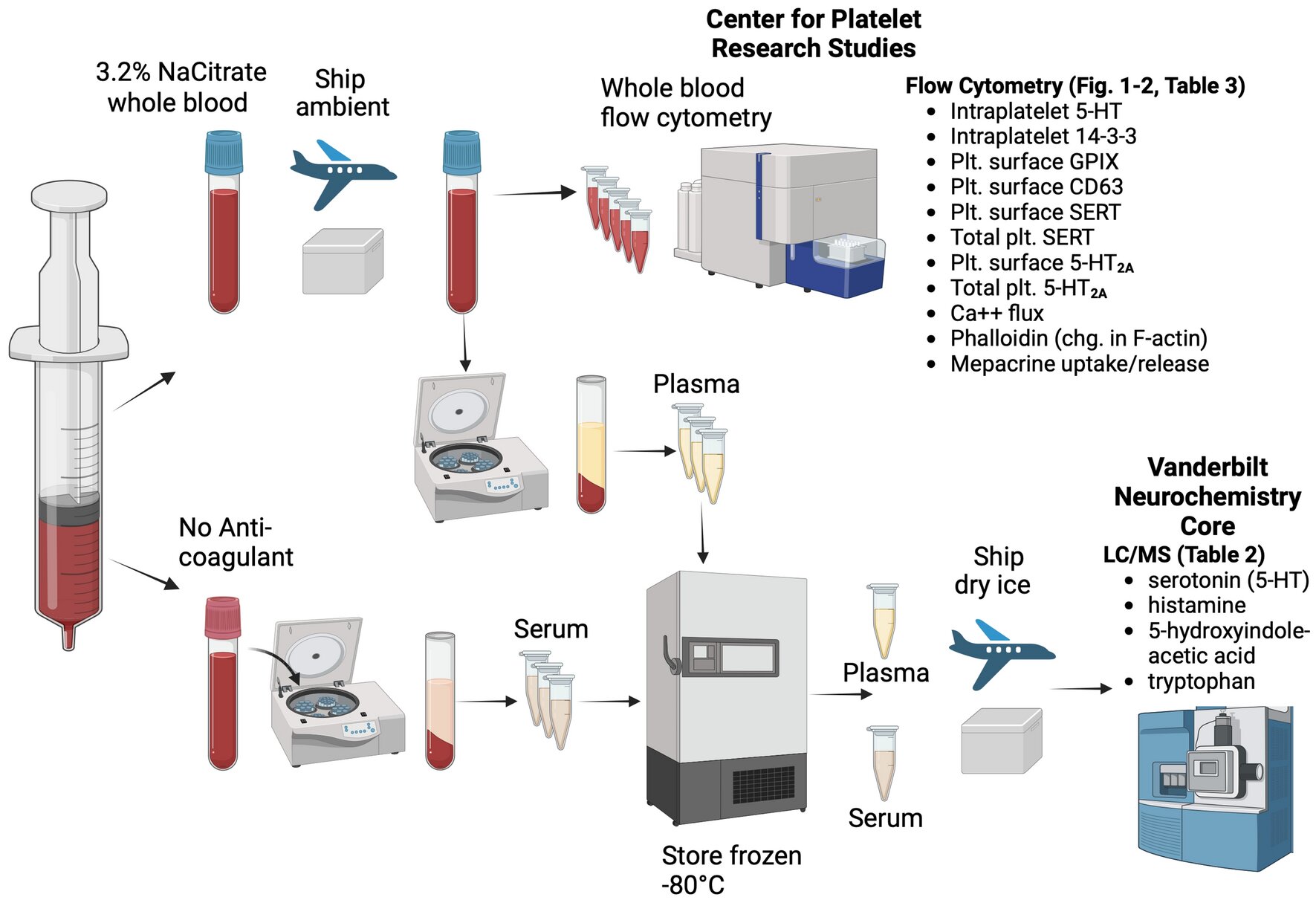
Treating Underlying Conditions
If an underlying condition is causing the low platelet count, addressing that issue is often the primary focus. This may involve:
- Discontinuing medications that may be causing the problem
- Treating infections with appropriate antibiotics or antiviral medications
- Managing autoimmune disorders with immunosuppressants or corticosteroids
- Addressing nutritional deficiencies
Medications to Boost Platelet Production
In some cases, medications may be prescribed to stimulate platelet production:
- Thrombopoietin receptor agonists: Drugs like eltrombopag and romiplostim can help increase platelet production in the bone marrow.
- Corticosteroids: These can help reduce platelet destruction in autoimmune thrombocytopenia.
Blood Transfusions and Other Procedures
For severe thrombocytopenia or in emergency situations, more immediate interventions may be necessary:
- Platelet transfusions: These can quickly raise platelet counts in critical situations.
- Plasma exchange: This procedure can help remove antibodies that may be destroying platelets.
- Splenectomy: In some cases, surgical removal of the spleen may be recommended to reduce platelet destruction.
Lifestyle Modifications and Precautions
If you have a low platelet count, certain lifestyle changes can help reduce your risk of bleeding and complications:
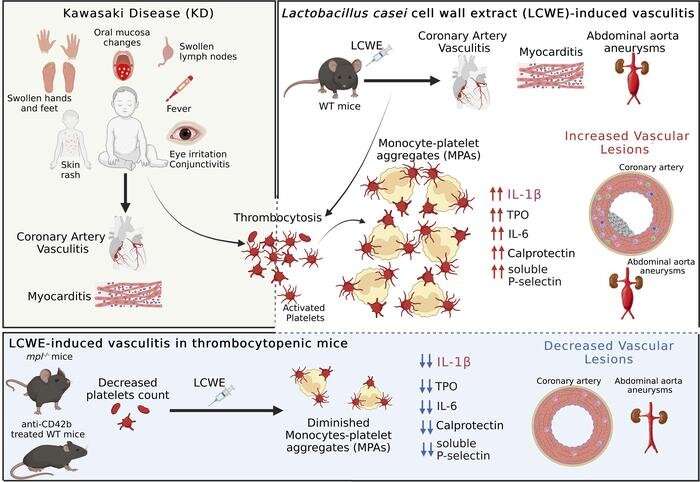
- Avoid activities with a high risk of injury
- Use soft-bristled toothbrushes and electric razors to minimize bleeding
- Wear protective gear during sports or potentially hazardous activities
- Avoid medications that can affect platelet function, such as aspirin and non-steroidal anti-inflammatory drugs (NSAIDs)
- Limit alcohol consumption
- Eat a balanced diet rich in vitamins and minerals that support blood health
Monitoring and Long-Term Management
Managing a low platelet count often requires ongoing monitoring and adjustments to your treatment plan. Your healthcare provider may recommend:
- Regular blood tests to track platelet counts
- Periodic evaluations to assess the effectiveness of treatments
- Adjustments to medications or treatment approaches as needed
- Education about recognizing signs of worsening thrombocytopenia
Can a low platelet count resolve on its own?
In some cases, particularly when the cause is temporary (such as a viral infection or medication side effect), a low platelet count may resolve without specific treatment. However, it’s crucial to work with your healthcare provider to identify the underlying cause and ensure appropriate management.
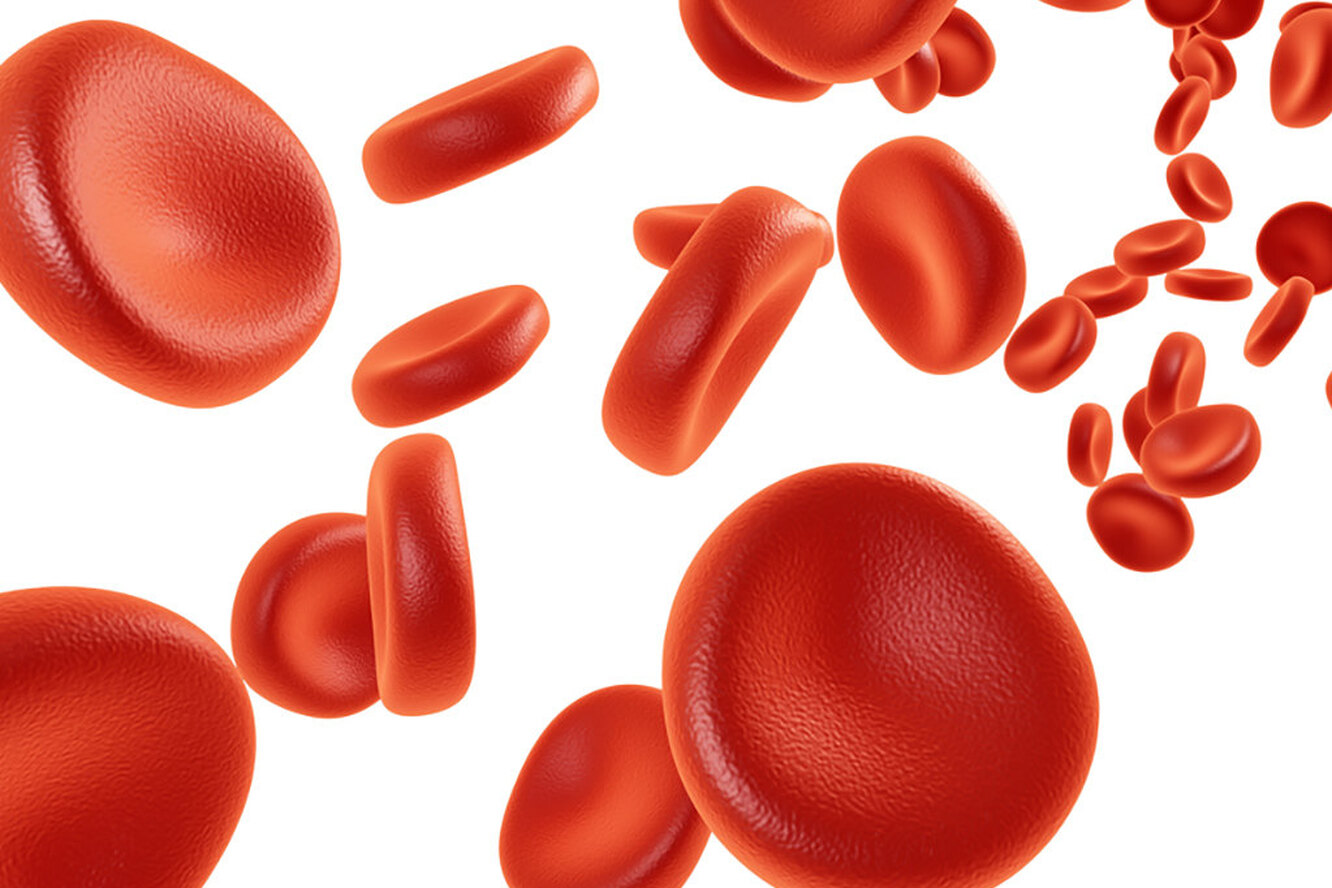
Research and Future Directions
Ongoing research in the field of hematology continues to advance our understanding and treatment of thrombocytopenia. Some promising areas of study include:
- Development of new thrombopoietic agents with improved efficacy and fewer side effects
- Gene therapy approaches for inherited platelet disorders
- Improved diagnostic techniques for faster and more accurate identification of underlying causes
- Novel immunomodulatory treatments for autoimmune thrombocytopenia
As research progresses, patients with low platelet counts can look forward to potentially more targeted and effective treatment options in the future.
When to Seek Emergency Care
While a platelet count of 130,000 is only mildly low, it’s important to be aware of signs that may indicate a more serious problem or rapid decline in platelet levels. Seek immediate medical attention if you experience:
- Unusually heavy or prolonged bleeding from minor cuts or injuries
- Spontaneous bleeding from the nose, gums, or other mucous membranes
- Blood in urine or stools
- Sudden appearance of numerous petechiae or larger bruises (purpura)
- Severe headache or changes in vision (which could indicate internal bleeding)
- Excessive menstrual bleeding
These symptoms could indicate a significant drop in platelet count or other complications that require prompt medical evaluation and treatment.
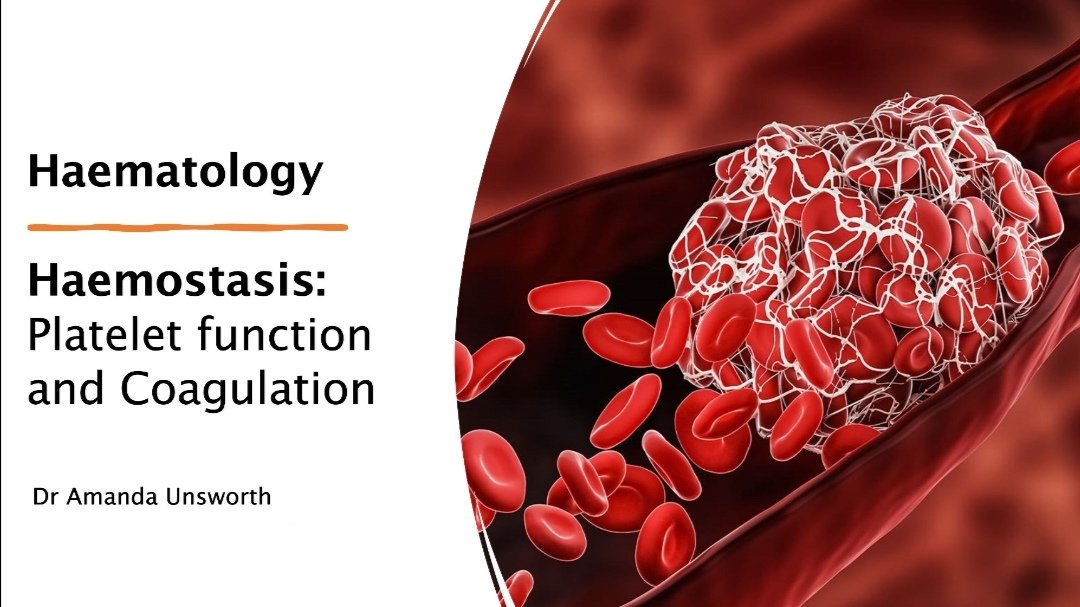
How quickly can platelet counts change?
Platelet counts can fluctuate relatively quickly, sometimes within hours or days, depending on the underlying cause. Factors such as infections, medications, or autoimmune reactions can lead to rapid changes in platelet levels. This is why regular monitoring is crucial, especially if you have a known platelet disorder or are at risk for thrombocytopenia.
Thrombocytopenia | NHLBI, NIH
Many factors can cause thrombocytopenia (a low platelet count). The condition can be inherited or acquired. “Inherited” means your parents pass the gene for the condition to you. “Acquired” means you aren’t born with the condition, but you develop it. Sometimes the cause of thrombocytopenia isn’t known.
In general, a low platelet count occurs because:
- The body’s bone marrow doesn’t make enough platelets.
- The bone marrow makes enough platelets, but the body destroys them or uses them up.
- The spleen holds on to too many platelets.
A combination of the above factors also may cause a low platelet count.
The Bone Marrow Doesn’t Make Enough Platelets
Bone marrow is the sponge-like tissue inside the bones. It contains stem cells that develop into red blood cells, white blood cells, and platelets. When stem cells are damaged, they don’t grow into healthy blood cells.
Many conditions and factors can damage stem cells.
Cancer
Cancer, such as leukemia (lu-KE-me-ah) or lymphoma (lim-FO-ma), can damage the bone marrow and destroy blood stem cells. Cancer treatments, such as radiation and chemotherapy, also destroy the stem cells.
Aplastic Anemia
Aplastic anemia is a rare, serious blood disorder in which the bone marrow stops making enough new blood cells. This lowers the number of platelets in your blood.
Toxic Chemicals
Exposure to toxic chemicals—such as pesticides, arsenic, and benzene—can slow the production of platelets.
Medicines
Some medicines, such as diuretics and chloramphenicol, can slow the production of platelets. Chloramphenicol (an antibiotic) rarely is used in the United States.
Common over-the-counter medicines, such as aspirin or ibuprofen, also can affect platelets.
Alcohol
Alcohol also slows the production of platelets. A temporary drop in the platelet count is common among heavy drinkers, especially if they’re eating foods that are low in iron, vitamin B12, or folate.
Viruses
Chickenpox, mumps, rubella, Epstein-Barr virus, or parvovirus can decrease your platelet count for a while. People who have AIDS often develop thrombocytopenia.
Genetic Conditions
Some genetic conditions can cause low numbers of platelets in the blood. Examples include Wiskott-Aldrich and May-Hegglin syndromes.
The Body Destroys Its Own Platelets
A low platelet count can occur even if the bone marrow makes enough platelets. The body may destroy its own platelets due to autoimmune diseases, certain medicines, infections, surgery, pregnancy, and some conditions that cause too much blood clotting.
Autoimmune Diseases
Autoimmune diseases occur if the body’s immune system mistakenly attacks healthy cells in the body. If an autoimmune disease destroys the body’s platelets, thrombocytopenia can occur.
One example of this type of autoimmune disease is immune thrombocytopenia (ITP). ITP is a bleeding disorder in which the blood doesn’t clot as it should.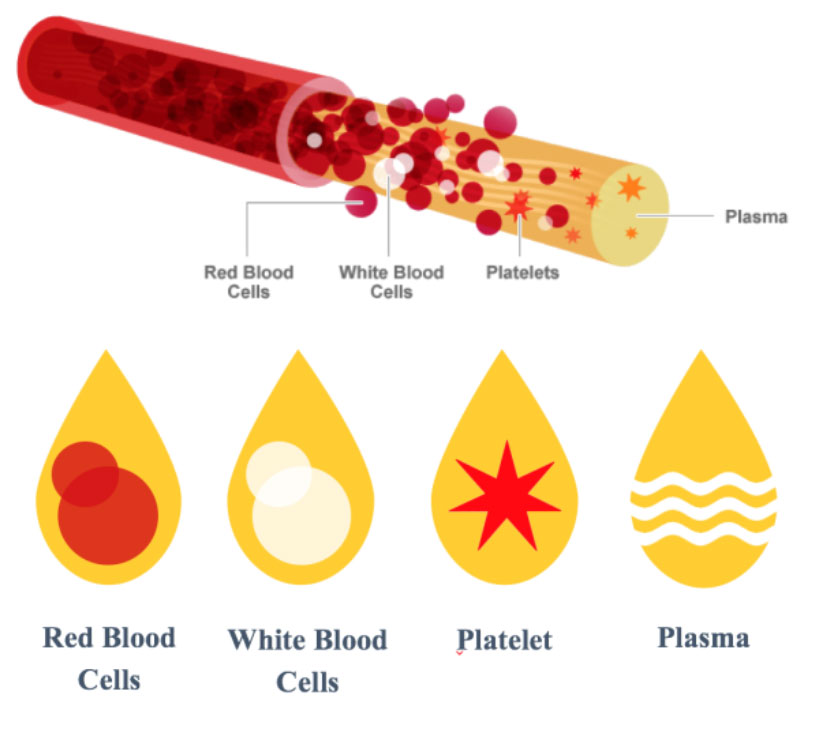 An autoimmune response is thought to cause most cases of ITP.
An autoimmune response is thought to cause most cases of ITP.
Normally, your immune system helps your body fight off infections and diseases. But if you have ITP, your immune system attacks and destroys its own platelets. Why this happens isn’t known. (ITP also may occur if the immune system attacks your bone marrow, which makes platelets.)
Other autoimmune diseases that destroy platelets include lupus and rheumatoid arthritis.
Medicines
A reaction to medicine can confuse your body and cause it to destroy its platelets. Examples of medicines that may cause this to happen include quinine; antibiotics that contain sulfa; and some medicines for seizures, such as Dilantin,® vancomycin, and rifampin. (Quinine is a substance often found in tonic water and nutritional health products.)
Heparin is a medicine commonly used to prevent blood clots. But an immune reaction may trigger the medicine to cause blood clots and thrombocytopenia. This condition is called heparin-induced thrombocytopenia (HIT).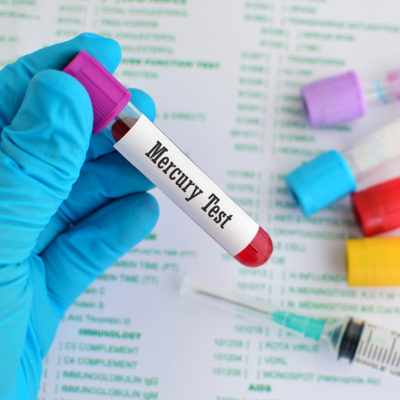 HIT rarely occurs outside of a hospital.
HIT rarely occurs outside of a hospital.
In HIT, the body’s immune system attacks a substance formed by heparin and a protein on the surface of the platelets. This attack activates the platelets and they start to form blood clots.
Blood clots can form deep in the legs (deep vein thrombosis), or they can break loose and travel to the lungs (pulmonary embolism).
Infection
A low platelet count can occur after blood poisoning from a widespread bacterial infection. A virus, such as mononucleosis or cytomegalovirus, also can cause a low platelet count.
Surgery
Platelets can be destroyed when they pass through man-made heart valves, blood vessel grafts, or machines and tubing used for blood transfusions or bypass surgery.
Pregnancy
About 5 percent of pregnant women develop mild thrombocytopenia when they’re close to delivery. The exact cause isn’t known for sure.
Rare and Serious Conditions That Cause Blood Clots
Some rare and serious conditions can cause a low platelet count. Two examples are thrombotic thrombocytopenic purpura (TTP) and disseminated intravascular coagulation (DIC).
Two examples are thrombotic thrombocytopenic purpura (TTP) and disseminated intravascular coagulation (DIC).
TTP is a rare blood condition. It causes blood clots to form in the body’s small blood vessels, including vessels in the brains, kidneys, and heart.
DIC is a rare complication of pregnancy, severe infections, or severe trauma. Tiny blood clots form suddenly throughout the body.
In both conditions, the blood clots use up many of the blood’s platelets.
The Spleen Holds On to Too Many Platelets
Usually, one-third of the body’s platelets are held in the spleen. If the spleen is enlarged, it will hold on to too many platelets. This means that not enough platelets will circulate in the blood.
An enlarged spleen often is due to cancer or severe liver disease, such as cirrhosis (sir-RO-sis). Cirrhosis is a disease in which the liver is scarred. This prevents it from working well.
An enlarged spleen also might be due to a bone marrow condition, such as myelofibrosis (MI-eh-lo-fi-BRO-sis).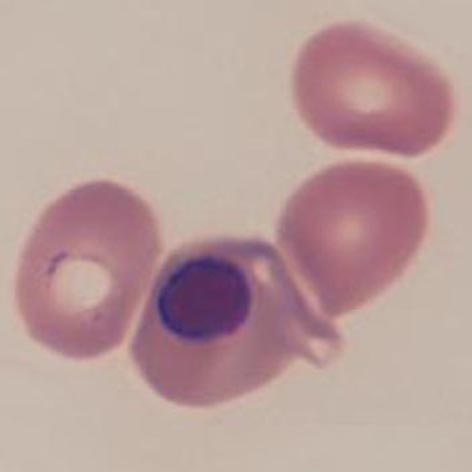 With this condition, the bone marrow is scarred and isn’t able to make blood cells.
With this condition, the bone marrow is scarred and isn’t able to make blood cells.
Low platelet count causes in elderly
Low platelet count causes in elderly
Does platelet count decrease with age?
Platelet count remains relatively stable during middle age (25–60 years old) but falls in old age (60+), decreasing by approximately 8 %, or 20,000 platelets /μl, between 50- and 59-year-old subjects and those over 70 years old (Segal and Moliterno 2006).
What is the most common cause of low platelets?
One of the most common causes of low platelets is a condition called immune thrombocytopenia ( ITP ). You may hear it called by its old name, idiopathic thrombocytopenic purpura.
When should I be concerned about low platelet count?
The following platelet counts carry the risk of serious bleeding: Between 20,000 and 50,000 per μl: There is more risk of bleeding when injured. Less than 20,000 per μl: Bleeding happens even without injury.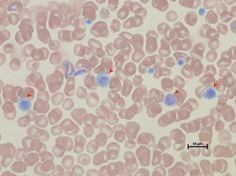 Below 10,000 platelets per μl: Spontaneous bleeding can be severe and a risk to life.
Below 10,000 platelets per μl: Spontaneous bleeding can be severe and a risk to life.
What is the life expectancy of someone with ITP?
In the majority of people with ITP , the condition isn’t serious or life -threatening. Acute ITP in children often resolves within six months or less without treatment. Chronic ITP can last for many years. People can live for many decades with the disease, even those with severe cases.
Is a platelet count of 130 bad?
A normal platelet count in adults ranges from 150,000 to 450,000 platelets per microliter of blood. A platelet count of less than 150,000 platelets per microliter is lower than normal. If your blood platelet count falls below normal, you have thrombocytopenia.
Can low platelets make you tired?
Thrombocytopenia ( low platelet count) definition and facts. Symptoms and signs of thrombocytopenia may include fatigue , bleeding, and others.
Symptoms and signs of thrombocytopenia may include fatigue , bleeding, and others.
What is low platelets a sign of?
Platelets stop bleeding by clumping and forming plugs in blood vessel injuries. Thrombocytopenia might occur as a result of a bone marrow disorder such as leukemia or an immune system problem. Or it can be a side effect of taking certain medications. It affects both children and adults.
How do I raise my platelet count?
Foods that increase platelet count Vitamin B-12. Vitamin B-12 helps keep your blood cells healthy. Folate. Folate is a B vitamin that helps your cells, including blood cells. Iron. Vitamin C. Vitamin C helps your platelets group together and function efficiently.
What happens if platelets are low?
When you don’t have enough platelets in your blood, your body can’t form clots. A low platelet count may also be called thrombocytopenia. This condition can range from mild to severe, depending on its underlying cause. For some, the symptoms can include severe bleeding and are possibly fatal if they’re not treated.
A low platelet count may also be called thrombocytopenia. This condition can range from mild to severe, depending on its underlying cause. For some, the symptoms can include severe bleeding and are possibly fatal if they’re not treated.
What should I eat if I have low platelets?
Consuming a diet rich in folate foods like oranges, peanuts, kidney beans, and black-eyed peas has been seen to significantly boost the blood platelet count in patients suffering from a low platelet count.
Does low platelets affect your immune system?
If you do not have enough platelets in your blood, you are likely to bruise very easily or may be unable to stop bleeding if you cut yourself. ITP causes your body’s immune system to destroy your platelets . White blood cells in your blood and your spleen (an organ in your abdomen) are part of your immune system .
What is the alarming level of platelets?
A normal platelet count ranges from 150,000 to 450,000 platelets per microliter of blood. Having more than 450,000 platelets is a condition called thrombocytosis; having less than 150,000 is known as thrombocytopenia.
Having more than 450,000 platelets is a condition called thrombocytosis; having less than 150,000 is known as thrombocytopenia.
Can ITP turn into leukemia?
ITP does not turn into a more serious blood disorder, like leukemia or aplastic anemia. It is usually not a sign that their child will later develop other autoimmune conditions, such as systemic lupus erythematosus (SLE or “lupus”).
What triggers ITP?
What causes idiopathic thrombocytopenic purpura ? In ITP , the immune system is stimulated to attack your body’s own platelets. Most often this is a result of antibody production against platelets. In a small number of cases, a type of white blood cell called T-cells will directly attack platelets.
Can low platelets make you dizzy?
The most common symptoms are: Signs of anemia, such as weakness, tiredness, headaches, heart palpitations and dizziness . Low platelet counts cause easy and profuse bleeding, as well as unexplained bruising.
Low platelet counts cause easy and profuse bleeding, as well as unexplained bruising.
What are Platelets and Why are They Important?
“Platelets are the cells that circulate within our blood and bind together when they recognize damaged blood vessels,” says Marlene Williams, M.D., director of the Coronary Care Unit at Johns Hopkins Bayview Medical Center. “When you get a cut, for example, the platelets bind to the site of the damaged vessel, thereby causing a blood clot. There’s an evolutionary reason why they’re there. It’s to stop us from bleeding.”
What makes platelets change their shape?
Platelets, the smallest of our blood cells, can only be seen under a microscope. They’re literally shaped like small plates in their non-active form. A blood vessel will send out a signal when it becomes damaged. When platelets receive that signal, they’ll respond by traveling to the area and transforming into their “active” formation. To make contact with the broken blood vessel, platelets grow long tentacles and then resemble a spider or an octopus.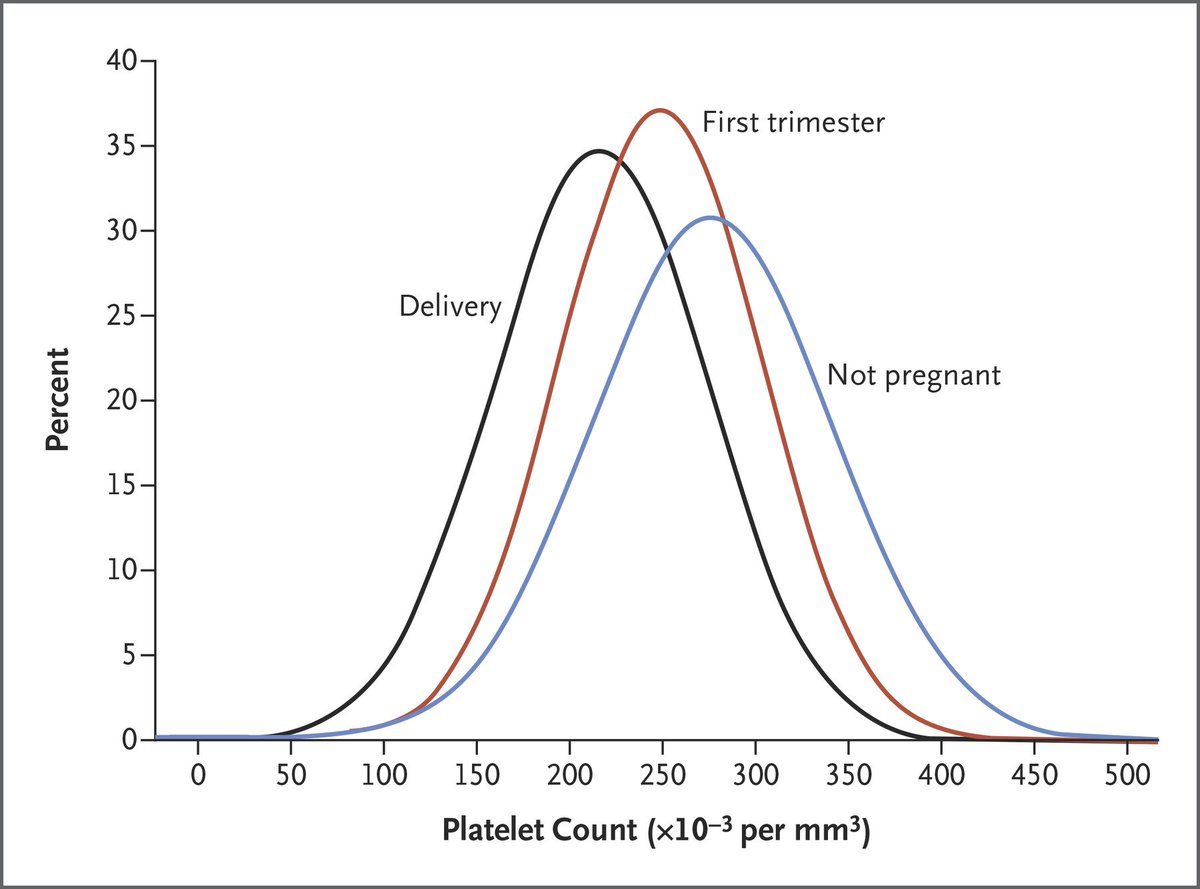
What is a healthy platelet count?
A normal platelet count ranges from 150,000 to 450,000 platelets per microliter of blood. Having more than 450,000 platelets is a condition called thrombocytosis; having less than 150,000 is known as thrombocytopenia. You get your platelet number from a routine blood test called a complete blood count (CBC).
What it means to have too many platelets
The medical term for having too many platelets is thrombocytosis, and there are two types:
- Primary or essential thrombocytosis – Abnormal cells in the bone marrow cause an increase in platelets, but the reason is unknown.
- Secondary thrombocytosis – The same condition as primary thrombocytosis, but may be caused by an ongoing condition or disease such as anemia, cancer, inflammation, or infection.
When there are symptoms, they include spontaneous blood clots in the arms and legs, which if untreated can lead to heart attack and stroke. In severe cases, the patient might have to undergo a procedure called a platelet pheresis. This lowers the platelet count by removing the blood, separating out the platelets, and returning the red blood cells back to the body.
In severe cases, the patient might have to undergo a procedure called a platelet pheresis. This lowers the platelet count by removing the blood, separating out the platelets, and returning the red blood cells back to the body.
With secondary thrombocytosis, the symptoms are usually related to the associated condition. For example, if you have an infection or anemia, you treat those conditions and the platelet count comes down.
What it means to have too few platelets
When you don’t have enough platelets, it’s called thrombocytopenia. Symptoms include easy bruising, and frequent bleeding from the gums, nose, or GI tract. Your platelet count drops when something is preventing your body from producing platelets. There are a wide range of causes, including:
- Medications
- An inherited condition
- Certain types of cancer, such as leukemia or lymphoma
- Chemotherapy treatment for cancer
- Kidney infection or dysfunction
- Too much alcohol
How platelets relate to cardiovascular disease
If you have too many platelets, it can increase your risk for clotting. But often your cardiovascular risk has more to do with platelet function than platelet number. For example, you could have a healthy number of platelets, but if they’re sticking together too much it can increase your chance of having a heart attack or stroke.
But often your cardiovascular risk has more to do with platelet function than platelet number. For example, you could have a healthy number of platelets, but if they’re sticking together too much it can increase your chance of having a heart attack or stroke.
Keeping track of your platelets
Too many platelets, too few platelets, abnormally functioning platelets, and related conditions such as blood clots, strokes, and heart attacks can be inherited. So it’s a good idea to alert your doctor when there’s a family connection.
“Although you may feel fine, your physician might want to keep a close eye on you and investigate whether or not you need medications to reduce the functioning of your platelets,” says Williams. “The most common blood-thinning medication is aspirin, although recent studies have shown that women under 65 who are otherwise healthy do not receive the same benefit from aspirin as men do. There is no concrete answer to that yet.”
I have just had my latest blood count and my p.
 ..
..
Probably not. It is more important to keep an eye on your trends rather than be concerned about one low (or high) count. Platelet counts can bounce around as platelets only last around a week before being replaced with new ones. Also reproducibility (the ability of the automatic counting to get the same result on repeated measurements) is only at best +/-10 and can be up to +/-40 depending on the laboratory, test equipment, how your blood was treated prior to testing, etc. So your count of 130 could perhaps be 120 or 140 or even further afield and still be considered a ‘true’ measurement.
Generally when your platelets get down to between 70 and 100, it is time to start thinking about treatment, with other factors also coming into consideration.
Remember too, that a percentage of normal, healthy people have platelets above or below the ‘normal’ range.
Neil… thank you very much for your information… I just had my first 6-mo. checkup, and my whites had dropped from 12,000 to 10,000. .. and I was glad, but my platelets had dropped from 147 to 119, which concerned me. Your info was verrry helpful. Thank you so much.
.. and I was glad, but my platelets had dropped from 147 to 119, which concerned me. Your info was verrry helpful. Thank you so much.
Barb
Reply (1)Report
This has been happening to me as well . They bounce anywhere from 130 down to 90. It definitely has me concerned .
Reply (1)Report
Hope you are doing fine now Khoovs..May I know how you have coped with the condition
Reply (0)Report
You are a star I was having the same problem thank you very much
Reply (1)Report
Does 81thousand platelets causes the cancer?? I am really worry about my mom…
Reply (0)Report
No low platelets don’t cause cancer, but you need to see your doctor for a correct diagnosis.
Reply (3)Report
In my case its 58 . Last week it was 117. Doctor is unable to diagnose the problem. All reports are negative. Then why its happening?
Reply (0)Report
There can be many causes of low platelets, so you really need to see a specialist – i. e. a haematologist to investigate the cause, which your doctor should arrange for you. Some testing can be done via a blood tests, but you may need a bone marrow test to determine what is happening.
e. a haematologist to investigate the cause, which your doctor should arrange for you. Some testing can be done via a blood tests, but you may need a bone marrow test to determine what is happening.
Platelets only last a bit over a week, so I would expect that you will need a repeat blood test every week or so to see if your platelets recover. Check with your doctor about what to look for to see if your platelets are worsening. You may notice petechiae (small pinhead sized dots) under your skin, increased bruising or cuts taking longer to stop bleeding, though your current count is still reasonably safe unless you are involved in vigorous/contact sport.
Note that this community supports those with a chronic blood cancer (CLL), which presumably has been ruled out in your case. If you do end up with this diagnosis, we will be here to support you.
Neil
Reply (0)Report
My phlates are above first blood test 1250 now 1300 22 y F
Reply (0)Report
I presume you don’t have a blood cancer diagnosis? 22 is very young to have CLL and low platelets is more often the case than high platelets. Have you seen a specialist (haematologist)?
Have you seen a specialist (haematologist)?
Reply (0)Report
I’m 28 years old and have gotten three blood tests done already and every time my platelet count would be in then 138-140 range. Worried I have some type of blood cancer. Going for 4th bloodwork test tomorrow morning. Should I worry?
Reply (0)Report
The reference range for platelets is around 150 to 450 and that reference range covers 95% of the healthy population. In other words 5% of the healthy population has platelet counts above 450 or below 150. (These reference numbers vary from testing laboratory to testing laboratory.)
Transfusions for low platelet counts aren’t given until counts drop below 20 if you have a fever and under 10 if you are otherwise well. Low platelets can be caused by illnesses, drugs, even some foods.
So you can see that your recent platelet counts are barely below the lower reference range and very safely way above the danger zone.
Do you have any old blood test results showing your platelet counts significantly higher? If so, follow up your consistently (barely) low results with your doctor to investigate possible causes.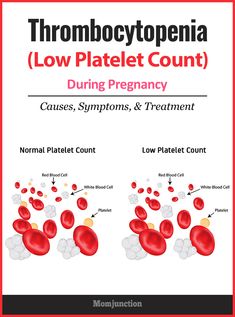 IF they started dropping I’d be more concerned, but note that I’m not medically trained. This just may be your normal. Incidentally, because platelets clump, there’s usually far more variation in counts than you mention and the platelets clumped together don’t get counted, giving a lower count than is actually the case.
IF they started dropping I’d be more concerned, but note that I’m not medically trained. This just may be your normal. Incidentally, because platelets clump, there’s usually far more variation in counts than you mention and the platelets clumped together don’t get counted, giving a lower count than is actually the case.
Neil
Reply (0)Report
Thanks for the reply Neil. After the third test I was sent for a ultra sound of my liver which turned out to be negative results, so it’s not the liver. Do you know if Suboxone would cause low platelet counts? And I know I don’t drink enough water, which I’ve fixed recently by staying hydrated. Sorry for taking up your time but I’m just worried it’s cancer or something life threatening. I meet with the doctor next Thursday so I’ll keep you posted.
Reply (0)Report
According to Drugs.com, thrombocytopenia (low platelets) is an uncommon side effect from taking suboxone (0.1 to 1% incidence). It’s listed under the hematologic section: drugs. com/sfx/suboxone-side…
com/sfx/suboxone-side…
Reply (0)Report
Hi Neil your answers have REALLY helped me not panic because I had a test it came as 130 then another in a month and now 90 count. I have been taking these tablets called Xenedtine – weight loss tablets. Could this be a cause? These are the ingredients: can any of these cause low platelets?? Because the Dr said STOP whatever I’m taking now! I have to go for another test in 7 days. I’m really panicking because I’m the healthiest person I know.
Ilex paraguariensis (Verna mate): Capsule: 168mg, Serving (2 capsules): 336mg
extract equiv. dry leaf: Capsule: 840mg, Serving (2 capsules): 1.68g
std. equiv. caffeine: Capsule: 2.52mg, Serving (2 capsules): 5.04mg
Levocarnitine Tartrate: Capsule: 125mg, Serving (2 capsules): 250mg
equiv. levocarnitine: Capsule: 85.25mg, Serving (2 capsules): 170.5mg
Paullinia cupana (Guarana): Capsule: 142.5mg, Serving (2 capsules): 285mg
extract equiv. dry seed: Capsule: 712.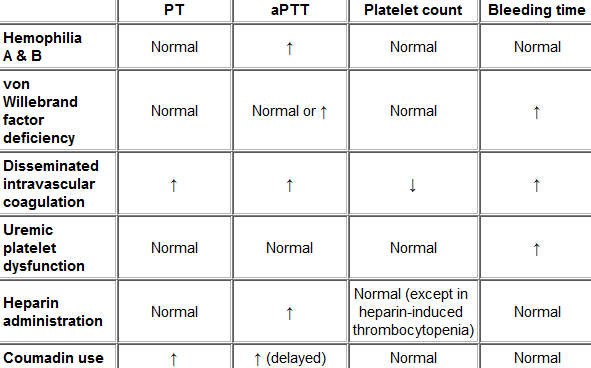 5mg, Serving (2 capsules): 1.425g
5mg, Serving (2 capsules): 1.425g
std. equiv. caffeine: Capsule: 21.375mg, Serving (2 capsules): 42.75mg
Coffea arabica (Coffee): Capsule: 70.86mg, Serving (2 capsules): 141.72mg
extract equiv. dry seed: Capsule: 3.543g, Serving (2 capsules): 7.086g
std. equiv. caffeine: Capsule: 69.44mg, Serving (2 capsules): 138.88mg
Caffeine anhydrous: Capsule: 16.65mg, Serving (2 capsules): 33.3mg
Ascorbic acid (Vitamin C): Capsule: 10mg, Serving (2 capsules): 20mg
Rubus idaeus (Red raspberry): Capsule: 3.13mg, Serving (2 capsules): 6.26mg
extract equiv. dry leaf: Capsule: 12.5mg, Serving (2 capsules): 25.04mg
Ongiber officinale (Ginger): Capsule: 2.5mg, Serving (2 capsules): 5mg
extract equiv. dry root: Capsule: 50mg, Serving (2 capsules): 100mg
Chromium picolinate: Capsule: 66.77mcg, Serving (2 capsules): 133.54mcg
equiv. chromium: Capsule: 8.3mcg, Serving (2 capsules): 16.6mcg
Cyanocobalamin (Vitamin B12): Capsule: 8.3mcg, Serving (2 capsules): 16. 6mcg
6mcg
Folic acid: Capsule: 8.3mcg, Serving (2 capsules): 16.6mcg
Tumera diffusa (Damiana): Capsule: 54mg, Serving (2 capsules): 108mg
extract equiv. dry leaf: Capsule: 540mg, Serving (2 capsules): 1.08g
Salix alba (White willow): Capsule: 2.35mg, Serving (2 capsules): 4.7mg
extract equiv. stem bark: Capsule: 235mg, Serving (2 capsules): 470mg
Other Ingredients: Capsule (Gelatin, Purified Water, Titanium Dioxide), Ethylcellulose Calcium Hydrogen Phosphate, Silicon Dioxide, Magnesium Stearate, Hypromellose.
Reply (0)Report
Hi Emilykate,
I see that you have just joined us and I presume that you don’t have a diagnosis of Chronic Lymphocytic Leukaemia. If you did, then your doctor’s advice to stop taking anything is even more important, because low platelet counts are common with this disease and what you are taking will further increase your risk of bleeding and bruising. Irrespective, there have been cases of liver damage with weight loss herbal supplements, which in the worst cases have resulted in the need for liver transplants and even deaths.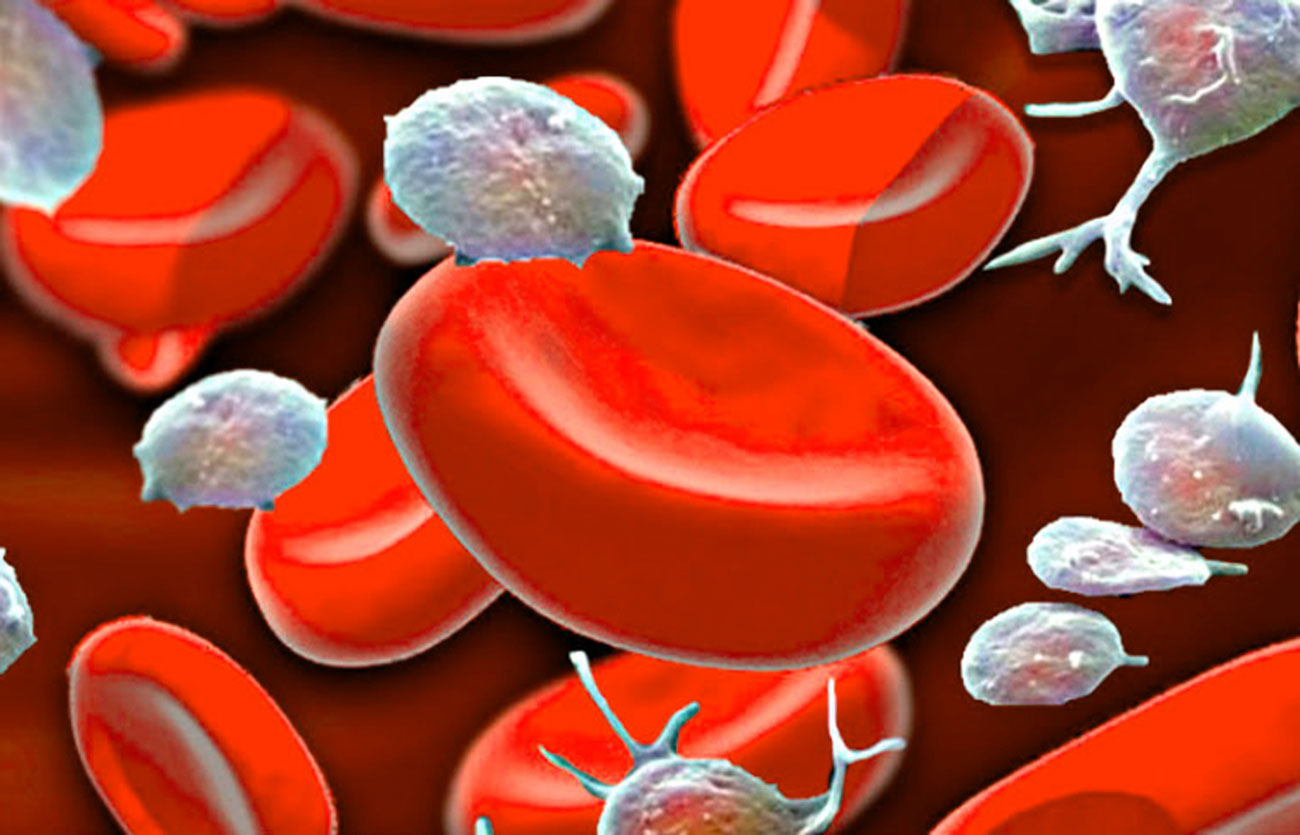 Supplements are generally poorly regulated (varies by country) – you don’t know that what you are taking is accurately described on the label.
Supplements are generally poorly regulated (varies by country) – you don’t know that what you are taking is accurately described on the label.
I don’t have the time to go through the ingredients of what you are taking, but one ingredient stands out, not for causing low platelets, but reducing their effectiveness.
mskcc.org/cancer-care/diagn…
Drugs.com states “Avoid using guarana together with other herbal/health supplements that can also affect blood-clotting.”
drugs.com/mtm/guarana.html
More here:
“Guarana seed extracts possess a strong ability to inhibit human platelet aggregation in response to a variety of agents. Current research supports the concept that unique complexes of catechins, epicatechins, their dimers, and caffeine might be responsible for the anti-platelet aggregation properties of guarana seeds.”
sciencedirect.com/science/a…
Drugs.com and the MSK site are reputable sites for your further investigations.
Neil
Reply (2)Report
Oh wow Aussie Neil! You are the best. I bet it’s that. You’re a gem. Thank you so much for the quick response I really do appreciate it.
It’s strange because sometimes in the past I felt like water was trickling down my legs. I’d itch them because I thought it was an ant or something. It was the strangest feeling. I also had vertigo / a bit of a drunk feeling (when I wasn’t drunk) hence having the blood test in the first place. I’m not sure if the weird leg feeling, the dizziness, sometimes forgetful, has anything to do with low platelets. I’m not a dr and have zero clue. I only just learnt that I have platelets last month. any advice would be further appreciated thank you Neil.
Reply (0)Report
I’m not medically trained either and my interest in supplements is specific to CLL. That said, the product you are taking is full of stimulants, trying to boost your metabolism. We live in a time poor world, where we look for timesaving shortcuts, by which we often miss out on other benefits.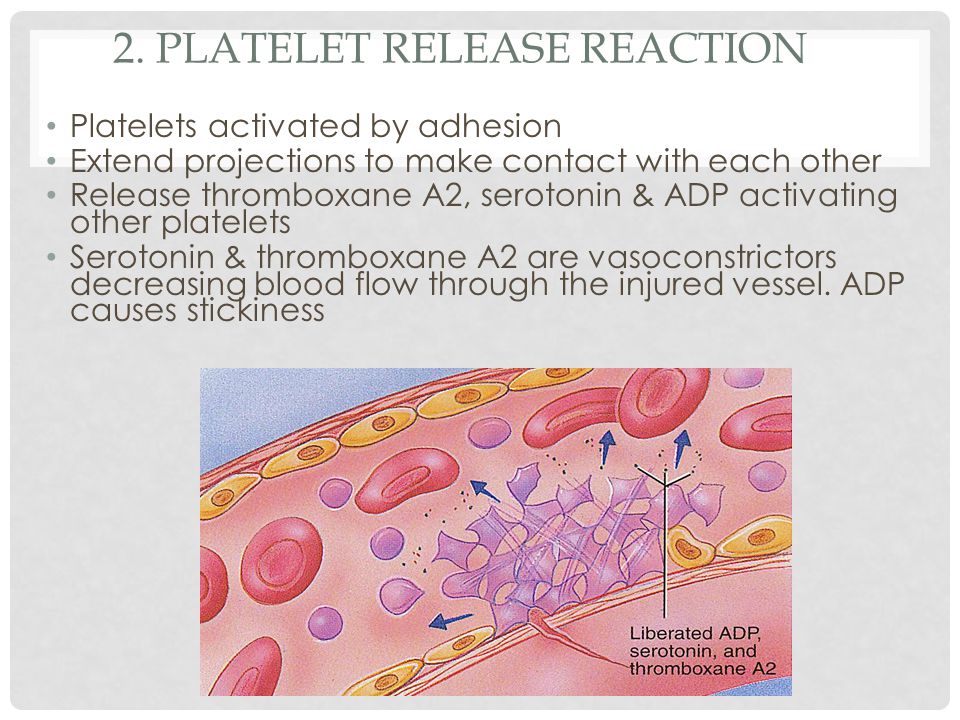 I recommend that you look for more opportunities to build more physical activity into your day, a lot of which you can do with minimal additional time. Check out incidental exercise:
I recommend that you look for more opportunities to build more physical activity into your day, a lot of which you can do with minimal additional time. Check out incidental exercise:
exerciseright.com.au/does-i…
Neil
Reply (1)Report
Thanks Neil! Appreciate it. have a good one! If I ever hear about CLL I know who to come to for answers!
Reply (2)Report
How are you doing now Neil
Your reply helps me so much today
Reply (1)Report
Should I worry if I have low platelets (gestational thrombocytopenia)?
If your platelet count drops below normal levels during pregnancy, it’s most likely that you have a common pregnancy condition called gestational thrombocytopenia. It affects about one pregnant woman in 10 and usually develops in mid to late pregnancy.
Your platelet count is usually checked during a routine blood test, taken at one of your antenatal appointments.
Platelets are cells that help your blood to clot when it needs to.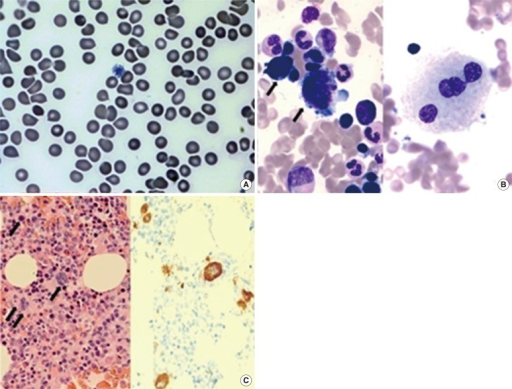 On average, adults have between 150 million and 450 million platelets per millilitre (ml) of blood. Pregnancy naturally causes a slight fall in your platelet count, particularly if you’re expecting twins. But, for most women, the count is still in the normal range. When your count dips to between 100 million and 150 million platelets per ml of blood, your doctor will diagnose mild gestational thrombocytopenia.
On average, adults have between 150 million and 450 million platelets per millilitre (ml) of blood. Pregnancy naturally causes a slight fall in your platelet count, particularly if you’re expecting twins. But, for most women, the count is still in the normal range. When your count dips to between 100 million and 150 million platelets per ml of blood, your doctor will diagnose mild gestational thrombocytopenia.
If your platelet count is only slightly below normal, it shouldn’t cause you or your baby any problems and you won’t need any treatment. Your midwife or obstetrician will continue to monitor your platelet count throughout the rest of your pregnancy, in case it drops further. Your platelet levels will return to normal in the weeks after your baby is born.
Doctors aren’t sure why gestational thrombocytopenia happens, but two factors may play a part:
- Your body produces more of the liquid part of blood (plasma) while you’re pregnant. This means that the platelets are more diluted, so you have fewer platelets per millilitre of blood.
 This doesn’t affect how well the platelets work, though.
This doesn’t affect how well the platelets work, though. - Your body naturally destroys platelets if they’re not used and replaces them with new ones. In pregnancy, this process is speeded up. The result is that you have fewer, but younger and larger, platelets in your blood.
You should be offered extra tests if your platelet count falls below 100 million per ml of blood. This happens to about one in 100 pregnant women. Your doctor will class this as moderate gestational thrombocytopenia. If your count is below 50 million per ml of blood, your doctor will class it as severe thrombocytopenia, although this is very rare.
If you have moderate or severe thrombocytopenia, it’s more likely to be caused by a condition you already have, such as lupus. This is when your immune system attacks healthy cells. Your doctor will ask whether you have a family history of certain conditions that may cause low platelets and take more blood tests to look for the cause.
Rarely, some mums-to-be already have a non-pregnancy-related type of thrombocytopenia, called immune thrombocytopenic purpura (ITP). Symptoms are bruising, bleeding gums and purple spots on the skin, caused by spontaneous bleeding.
Symptoms are bruising, bleeding gums and purple spots on the skin, caused by spontaneous bleeding.
Some medicines, such as the blood-thinning drug heparin, can also affect your platelet count.
If you have a diagnosed underlying condition that causes low platelet count, your doctor will plan your antenatal and postnatal care with this in mind.
If you develop moderate to severe gestational thrombocytopenia during pregnancy, your doctor will recommend having treatment to stabilise the condition and to keep your baby safe.
What treatment your doctor recommends will depend on the underlying cause for your low platelet count. You may have to take steroid tablets, or have an infusion of a blood protein called globulin (IVIg). Or your doctor may recommend that you have a transfusion of platelets or plasma. This will increase the platelet levels in your blood.
Depending on the severity of your low platelet count and the cause, your doctor may advise you to give birth on a labour ward. This is because both severe gestational thrombocytopenia and ITP can raise the risk of a postpartum haemorrhage. Giving birth on a labour ward will mean that your medical team can act swiftly to keep you and your baby safe.
This is because both severe gestational thrombocytopenia and ITP can raise the risk of a postpartum haemorrhage. Giving birth on a labour ward will mean that your medical team can act swiftly to keep you and your baby safe.
You may also have an appointment with an anaesthetist to discuss pain relief options, and whether an epidural or spinal anaesthetic is safe for you.
Occasionally, a very low platelet count could be a sign of a problem with your pregnancy. This could be a rare complication of pre-eclampsia in late pregnancy, called HELLP syndrome, which also causes the following symptoms:
If you have any of these symptoms, call your maternity unit straight away.
What is pre-eclampsia and what are the warning signs?
Find out which pregnancy symptoms you should never ignore.
Last reviewed: April 2020
How long does it take to increase platelet count? – Colors-NewYork.com
How long does it take to increase platelet count?
An increased or normalized platelet count is generally seen within 2 weeks of therapy, particularly with high-dose dexamethasone. Your doctor will then likely cut your dose gradually over the next 4 to 8 weeks.
Your doctor will then likely cut your dose gradually over the next 4 to 8 weeks.
How can I increase my platelets quickly?
These tips can help you understand how to raise your blood platelet count with foods and supplements.
- Eating more leafy greens.
- Eating more fatty fish.
- Increasing folate consumption.
- Avoiding alcohol.
- Eating more citrus.
- Consuming more iron-rich foods.
- Trying a chlorophyll supplement.
What is the most common cause of low platelet count?
Decreased production of platelets Leukemia and other cancers. Some types of anemia. Viral infections, such as hepatitis C or HIV. Chemotherapy drugs and radiation therapy.
Is a platelet count of 130 bad?
A normal platelet count range is 140 to 400 K/uL. Sometimes, your CBC may show that your counts or values are too low. For example, you might not have enough white blood cells, or your platelet count could be lower than normal.
What is the medical way to increase platelet count?
Foods that increase platelet count
- Vitamin B-12. Vitamin B-12 helps keep your blood cells healthy. A deficiency of B-12 has been associated with low platelet counts.
- Folate.
- Iron.
- Vitamin C. Vitamin C helps your platelets group together and function efficiently.
What is the best treatment for low platelets?
Treatment
- Blood or platelet transfusions. If your platelet level becomes too low, your doctor can replace lost blood with transfusions of packed red blood cells or platelets.
- Medications.
- Surgery.
- Plasma exchange.
What foods to avoid if you have low platelets?
Some foods to avoid are:
- red meat.
- saturated fats found in whole dairy products.
- non-plant-based oils, such as butter and margarine.
- fruits that have natural blood-thinning effects, such as tomatoes and berries (eat in limited quantities)
- fast food.

- convenience food found in boxed and frozen food aisles.
- canned food.
What not to eat when you have low platelets?
Certain foods and drinks can reduce platelet counts including:
- alcohol.
- aspartame, an artificial sweetener.
- cranberry juice.
- quinine, a substance in tonic water and bitter lemon.
Is coffee bad for low platelets?
Coffee drinking decreases platelet aggregation, and induces a significant increase in phenolic acid platelet concentration.
Is Ginger good for low platelet count?
Due to the potential effects of ginger on platelet aggregation, ginger is a commonly-cited example of an herbal supplement that should be avoided in patients with thrombocytopenia, platelet function defects or coagulopathy, such as populations using ginger for its antiemetic effect in cancer chemotherapy.
Is honey good for low platelets?
Honey samples showed moderate inhibition of platelet aggregation with IC(50) 5-7. 5%. The coagulation assays showed that at higher concentrations (>15%) honey samples increased whole blood clotting time. When assayed in platelet poor plasma (PPP), honey samples significantly (P>0.005) prolonged aPTT, PT, and TT.
5%. The coagulation assays showed that at higher concentrations (>15%) honey samples increased whole blood clotting time. When assayed in platelet poor plasma (PPP), honey samples significantly (P>0.005) prolonged aPTT, PT, and TT.
Which juice is good to increase platelets?
Beet root also prevents the free radical damage of platelets and helps in increasing its number. Therefore, consuming a glass of beet root juice can greatly help in increasing the number of platelets.
Can exercise increase platelets?
Platelet Count and Volume. Several studies show that acute exercise results in a transient increase in platelet count. This increase is caused by hemoconcentration and by platelet release from the liver, lungs, and, importantly, the spleen [4–6].
Does honey thin your blood?
Honey might slow blood clotting. In theory, taking honey along with medications that also slow clotting might increase the chances of bruising and bleeding.
Blood counts – Dana-Farber Cancer Institute
What is blood?
Blood is made up of three basic types of cells:
- Red blood cells .
 The hemoglobin in the red blood cell carries oxygen to all parts of your body to give you energy. If your red blood cell count is low (anemia), you may look pale and feel tired. If your hemoglobin is very low, you may need a blood transfusion.
The hemoglobin in the red blood cell carries oxygen to all parts of your body to give you energy. If your red blood cell count is low (anemia), you may look pale and feel tired. If your hemoglobin is very low, you may need a blood transfusion. - White blood cells. White blood cells fight infections. The white blood cells that fight the best are called neutrophils (segs). Your neutrophils are called “bands.”
- Platelets. Platelets help prevent bleeding by clotting the blood. These cells travel through your body in a white/yellow liquid called plasma. When your platelet count is low you may bleed when you get a cut, bruise or nose bleed. You may, if your count is very low, need a platelet transfusion to prevent bleeding.
Where do blood cells come from?
Your body is constantly producing blood cells. Blood cells are made in the bone marrow, the spongy tissue inside your bones. They come from a type of cell called a stem cell. The stem cell divides in response to signals made by your body. It will either become a red blood cell, a white blood cell, or a platelet. These signals are called growth factors. Blood cells live for a specified time in your body. White blood cells live for a few hours to a few months. Red blood cells live for 120 days. Platelets live for five to nine days.
It will either become a red blood cell, a white blood cell, or a platelet. These signals are called growth factors. Blood cells live for a specified time in your body. White blood cells live for a few hours to a few months. Red blood cells live for 120 days. Platelets live for five to nine days.
Why does chemotherapy affect my blood cells?
Chemotherapy affects rapidly growing cells more than slower growing cells. Some normal cells have a fast rate of growth. These include your blood cells. A side effect of chemotherapy may destroy young blood cells as they are growing. It can take anywhere from seven to 21 days for your blood cells to reach their lowest numbers.
Your nurse or doctor will tell you when your blood cells counts are expected to be low. This is called your nadir. You will have your blood tested periodically to see how many of each type of blood cell you have. This is called having your counts checked.
What happens when my counts are low?
Red blood cells are measured by values called hemoglobin (Hgb) and hematocrit (Hct). The normal value for hemoglobin is 14.0 to 18.0; hematocrit is 37 to 52. If your red blood cell count is low, you may feel more tired or short of breath than usual. This is called anemia. Your doctor may order a red blood cell transfusion for you. Sometimes your red blood cells may be low because of the disease itself. Your doctor may prescribe a growth factor called erythropoietin (EPO) to help increase your red blood cell counts.
The normal value for hemoglobin is 14.0 to 18.0; hematocrit is 37 to 52. If your red blood cell count is low, you may feel more tired or short of breath than usual. This is called anemia. Your doctor may order a red blood cell transfusion for you. Sometimes your red blood cells may be low because of the disease itself. Your doctor may prescribe a growth factor called erythropoietin (EPO) to help increase your red blood cell counts.
One type of white blood cells are neutrophils. When neutrophils are low, this is called neutropenia. You may not see the usual signs of infection so review the signs of infection at the bottom of this page.
A normal white blood cell count is 4,000 to 10,000. Sometimes your doctor may order a growth factor called GM-CSF or G-CSF to help your white blood cells recover more rapidly. The neutrophils fight most common infections. For that reason, this portion of the white cell count is also monitored. This is called the Absolute Neutrophil Count (ANC).
A normal platelet count is 130,000 to 400,000. A platelet count below 50,000 may make you more at risk for bleeding. This is called thrombocytopenia. If your platelet count drops, your doctor may order a platelet transfusion for you.
What should I do if my counts are low?
Talk with your nurse or physician about avoiding crowds and public places such as shopping malls, airplanes, buses, trains, etc. You may need to wear a mask if your white blood count is very low.
Good hygiene is important. Shower or bathe daily and pat yourself dry. Wash hands often and well. Always wash them before eating and after using the bathroom.
- Try to avoid nicks, cuts, and tears in your skin.
- If you nick, cut or burn yourself, wash skin immediately with soap and water Bandage the cut if necessary.
- Avoid going barefoot.
- Wear gloves when doing any physical activity that might dry or damage your skin.
- Be careful cutting or trimming your nails to avoid small nicks.

- Do not have a manicure.
- Use cuticle cream remover instead of picking, tearing or cutting cuticles.
- If you shave, use an electric razor.
- Do not take rectal temperature.
- Do not clean out litter boxes or bird cages. Avoid all contact with animal urine or stool.
- Avoid long exposure to the sun. Wear sunscreen of at least SPF 30.
- Avoid getting a sunburn.
- Brush your teeth two to four times per day with a soft toothbrush and rinse with a mixture of salt and water or baking soda and water. Good mouth care will help decrease the number of germs in your mouth.
- Prevent constipation. Straining to have a stool could cause small tears in the rectal area.
- Do not use suppositories or enemas unless told otherwise by your nurse or doctor.
- If needed your physician can recommend a stool softener.
- Wipe very gently but thoroughly after a bowel movement.
- Tears in the lining of the intestine or rectal area can be dangerous when the white blood cell count is low.

- Increase your dietary fiber with fruits and vegetables.
- Drink eight 10-ounce glasses of liquid a day.
- Perform gentle exercise such as walking daily.
- Take short rest periods between activities.
- If you receive blood or platelets at a hospital other than Dana-Farber, make sure they are irradiated or leukoreduced. Obtain a medical alert bracelet.
- Do not take medications containing aspirin or ibuprofen unless your doctor tells you to. These drugs can make the platelets less effective.
- If your platelet count is low:
- you should not have sexual intercourse.
- women should not use tampons or douche.
- You should avoid trauma during sexual relations, maintain cleanliness and lubrication.
Signs of infection
Be sure to notify your nurse or doctor immediately if you have any abnormal bleeding. This includes nose bleeds, blood in urine or stool, dark tarry stools, bleeding gums or easy bruising.
Be sure to let your nurse or doctor know if you develop any of the following signs of an infection:
- a fever of 100.5 degrees or more
- loose stool for more than two days
- severe night sweats, shaking chills
- shortness of breath, cough or sore throat
- headaches or neck stiffness
- frequent urination, burning with urination
- redness, swelling, pain or discharge from anywhere on your body
- extreme fatigue
90,000 Wake-up call: platelet counts predict death from COVID-19 | Articles
A simple blood count will help determine the severity of a patient with a coronavirus. Researchers examined data from more than 1,500 hospitalized people and found that platelet levels dropped significantly in those patients whose treatment ended in death. Scientists have proposed using this indicator as a marker of the potential threat of death and worsening of the course of the disease. Russian experts believe that this is a promising method for monitoring health in COVID-19.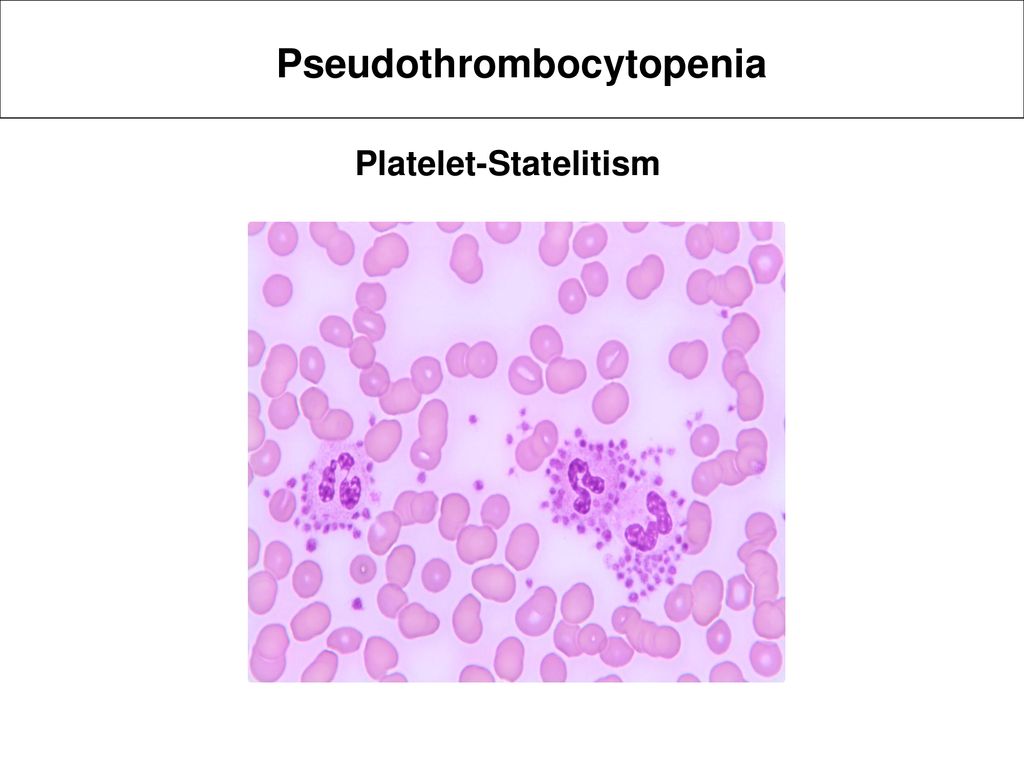 Moreover, such an analysis can be passed in any clinical laboratory right now, so doctors will not need new technical solutions and large financial costs.
Moreover, such an analysis can be passed in any clinical laboratory right now, so doctors will not need new technical solutions and large financial costs.
Scientific prediction
Researchers from the University of Verona and the University Hospital of Padua, together with colleagues from the United States, analyzed a number of scientific articles that reported on the level of platelets (blood components that are actively involved in the construction of blood vessels. – “Izvestia”) in patients with COVID-19.
The case histories of 1779 patients were studied, 399 (22.4%) of them were in serious condition. Comparing the rates of clinical analyzes, the scientists concluded that a low platelet count is associated with an increased risk of severe disease and mortality in patients with coronavirus (a preprint of the article is available in scientific libraries).
Activated platelet on glass with immobilized fibrinogen
Photo: commons.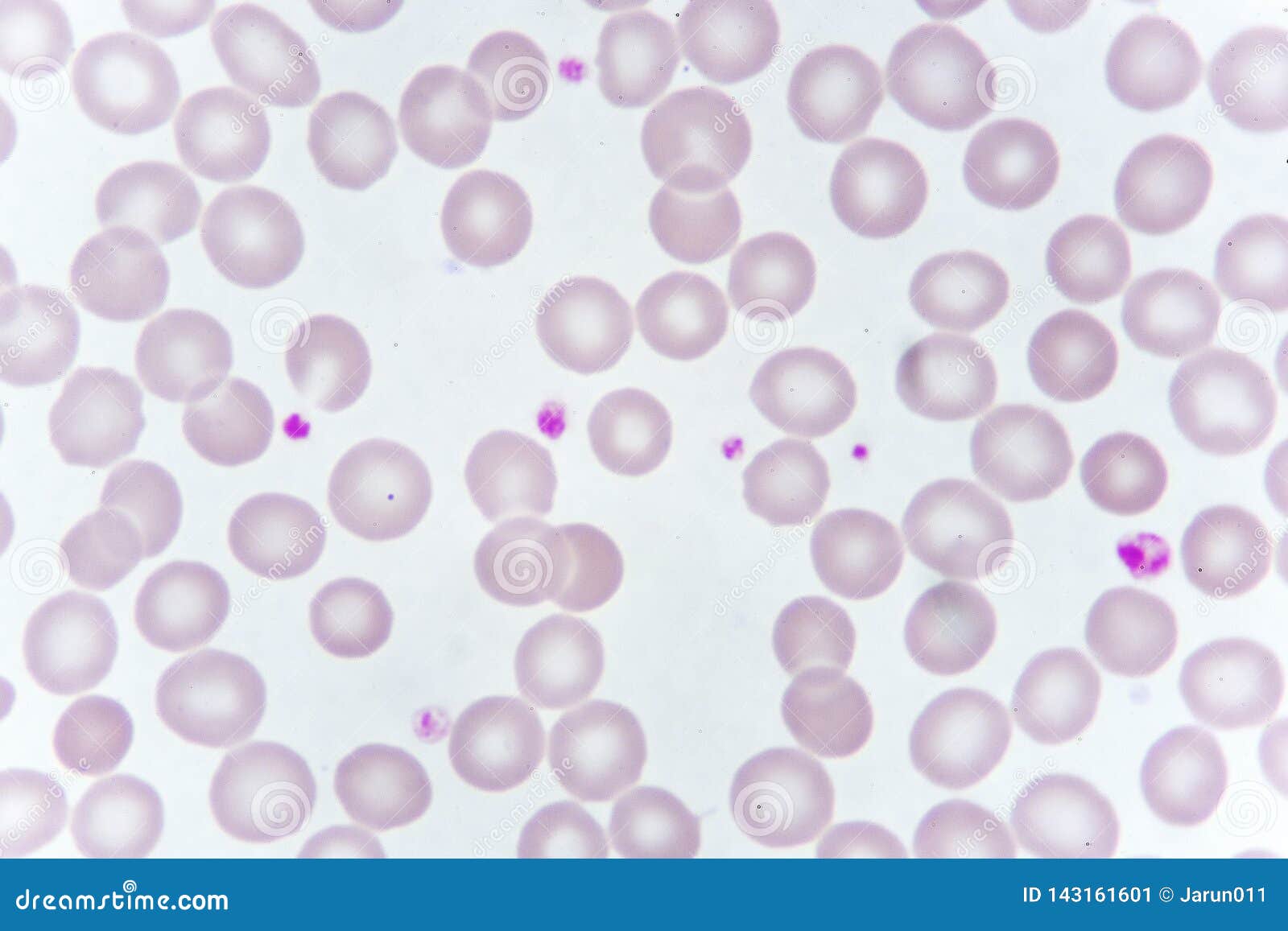 wikimedia.org
wikimedia.org
“It is proposed to use this indicator as a marker of the patient’s worsening condition,” David Naimzada, a researcher at the laboratory for analysis of population health indicators and digitalization of health care at MIPT, told Izvestia. – We are talking about the possibility of monitoring the condition of the infected and making medical decisions.
According to the scientist, the level of platelets reflects some aspects of the state of the hemostasis system, the function of which is to preserve the liquid state of the blood, stop bleeding in case of damage to the walls of blood vessels and dissolution of blood clots.Disruption of the work of this system indicates systemic malfunctions of the body, which to some extent may indicate a sharp deterioration in its work as a whole.
Effective indicator
The identified criterion can indeed be used to diagnose severe forms of coronavirus, which require special attention of doctors, Roman Komarov, head of the cardiac surgery department of the Sechenov University Clinical Center, told Izvestia.
– In severe cases of coronavirus infection, multiple organ failure syndrome occurs: the functions of the liver, kidneys, lungs are impaired , – noted the cardiac surgeon.- This provokes suppression of the hematopoietic sprout, resulting in a decrease in the number and quality of platelets.
This indicator is already used in clinical practice to monitor the health of patients with various pathological conditions, Professor of Peter the Great St. Petersburg Polytechnic University, Doctor of Biological Sciences, head of research in the field of molecular virology and oncology Andrey Kozlov.
Scanning electron micrograph (SEM) of human blood cells: erythrocyte, activated platelet, leukocyte (left to right)
Photo: commons.wikimedia.org
– Many diseases, including oncological ones, are accompanied by a decrease in the level of platelets (thrombocytopenia is a pathology characterized by problems with stopping bleeding.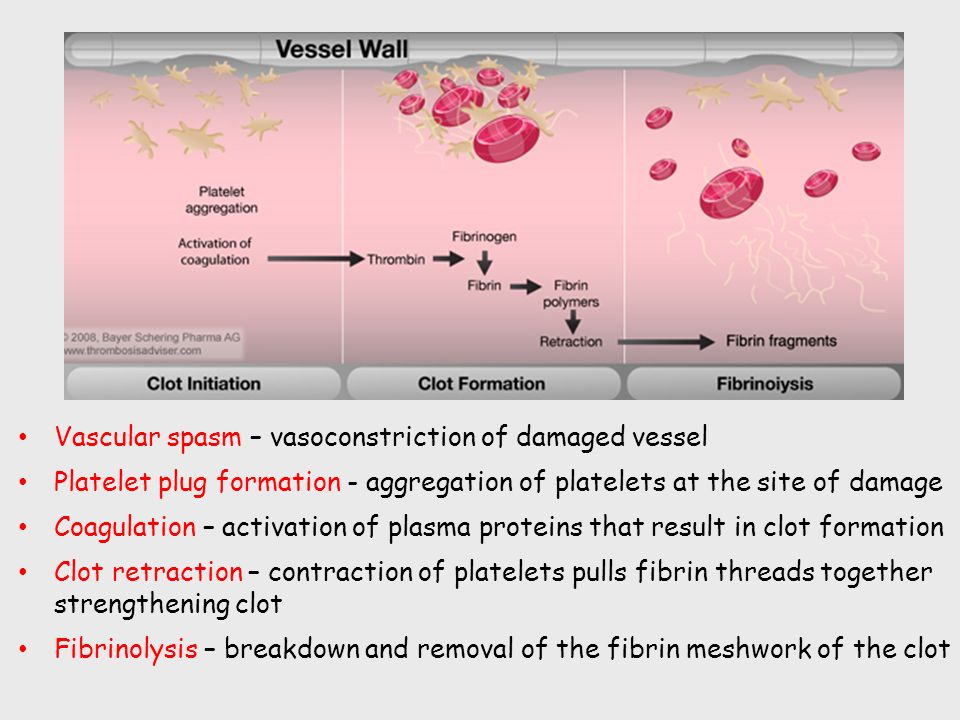 – Izvestia). This is important information for clinicians.Of course, a decrease in platelets is a signal that the patient’s condition is worsening , – the expert emphasized.
– Izvestia). This is important information for clinicians.Of course, a decrease in platelets is a signal that the patient’s condition is worsening , – the expert emphasized.
The scientist said that in general, blood counts can tell a lot about the severity of diseases.For example, in AIDS, the ratio of CD4 cells (a type of lymphocyte called helper T cells that help other cells to destroy infecting organisms) and CD8 (killer T cells that recognize and destroy abnormal or infected cells) are disrupted in AIDS. Their proportion is considered an important clinical indicator that is used to characterize the patient’s condition and the quality of the treatment process. As for the coronavirus and the level of platelets, the study of their connection must be continued, Andrei Kozlov noted.
Available analysis
As David Naimzada explained in a conversation with Izvestia, the method for determining the level of platelets in the blood is good because it is available in every clinical laboratory. Therefore, its implementation will not require special costs and technical means.
Therefore, its implementation will not require special costs and technical means.
However, for COVID-19, it is proposed to apply such a relatively simple method of monitoring the patient’s condition for the first time. To date, there is little information in the scientific literature on the pathogenesis of the new strain.
So far there is not enough information to make unambiguous conclusions about the effectiveness of the proposed analysis, says Nikolai Karpov, an employee of the Institute of Biology of Tyumen State University (the university is a participant in the project to improve competitiveness “5-100”).
Morgue staff enter the crematorium of La Almudena cemetery with the coffin of a person who died of coronavirus disease, Madrid, Spain, March 23, 2020
Photo: REUTERS / Juan Medina
– There may be several reasons for the connection established by scientists. The virus may be affecting the platelet production system (red bone marrow). Or maybe it binds directly to platelets and causes the production of antibodies in the body against its own cells. While it is too early to talk about any specific markers, this requires additional research , the expert believes.
Or maybe it binds directly to platelets and causes the production of antibodies in the body against its own cells. While it is too early to talk about any specific markers, this requires additional research , the expert believes.
Izvestia also found out that other blood parameters are now being examined in the treatment of coronavirus infection. For example, the Russian guidelines for physicians suggest using a number of standard laboratory tests when deciding whether to transfer to an intensive care unit.Doctors measure the level of bilirubin, creatinine and other clinical indicators.
READ ALSO
What does a blood platelet test show?
Platelets are colorless blood cells responsible for blood clotting (hemostasis) and regeneration of damaged blood vessels. Deviations from normal values of platelets in the blood can signal such serious diseases as thrombosis, atherosclerosis, cancer, asthma, coronary heart disease, myocardial infarction and many others.To assess the state of platelets, not only the indicator of their number in the blood plasma is used, but also the time of its coagulation. In this article, we will take a closer look at the various types of platelet tests.
What does the platelet count in the blood test mean?
Platelets are small blood cells 2–5 µm in size [1]. The name comes from the Greek words “clot” and “cell” and reflects their ability to form blood clots [2]. These blood elements are spherical and have no nucleus.Platelets are formed in the cells of the red bone marrow. Their main function is to maintain the work of blood vessels. In the human body, platelets are responsible for the following processes [3,4]:
- Primary (physical) occlusion of blood vessels at the sites of their damage to prevent blood loss and preserve blood within the veins, arteries, capillaries. This is achieved in the process of numerous interactions of the components of the vessel wall, blood cells and plasma coagulation factors contained in the outer layer of the platelet.
- Plasma coagulation (the formation of a permanent platelet plug) begins as a result of the release of phospholipids (glycoproteins) from the platelet membrane and alpha granules with 22 active components – they start the blood clotting process. A complex sequential chain is formed, a cascade of biochemical reactions, leading to the formation of a dense fibrin clot, its compaction, and after wound healing – to resorption.
- Regeneration and angiotrophic function .By giving part of its surface to the “patches”, the platelet provides nutrition to the cells of the vascular wall (endothelial cells) and maintains the structure and function of microcapillaries. This is due to the absorption of platelets by endothelial cells. When destroyed, the platelet releases other factors – growth factors: VEGF, EGF, PDGF, TGF-β, FGF and others, which are responsible for the restoration and division of cells.
Other auxiliary functions of platelets are transport (the process of transferring hormones and enzymes) and phagocytic (destruction of viruses and antigens).
Platelets do not live long – about 7-10 days – and are constantly renewed [5]. Their level indicates the intensity of the processes of hematopoiesis in the body. The normal concentration of platelets in a healthy person is 180,000–320,000 cells per microliter (or 180–320 × 10 3 cells / μl). Sometimes in a blood test, the level of platelets can be reflected in units per liter and recorded as 180–320 × 10 9 cells / l [6]. In a general blood test, this indicator is indicated by the abbreviation PLT.
Diseases of platelets
Abnormalities in platelet activity are designated by the general term “thrombocytopathy” [7]. A low platelet count is called thrombocytopenia, and an increased platelet count is called thrombocytosis.
Blood tests for platelets and clotting
First of all, you need to know that there is no such type of research as a “platelet test”. The level, function and condition of platelets are assessed collectively on the basis of several studies, the main of which is a general (clinical) blood test.
Complete blood count for platelets
In the general blood count, the level of platelets (PLT) is one of the mandatory indicators. Along with this, thrombocrit is measured – the proportion of whole blood volume occupied by platelets. This indicator is referred to as PCT. In a clinical blood test, the thrombocyte norm is 180-320 × 10 9 cells / l, the thrombocyte norm is measured as a percentage and is 0.1-0.4% [8].
A general blood test is prescribed for most diseases in the first place, since it contains many of the most important basic indicators of human health.This analysis allows you to identify inflammatory processes in the body, various diseases of the blood and the process of hematopoiesis, allergic reactions and assess the state of the immune system. Blood is taken with a syringe from the ring finger or from a vein, as a rule, the analysis is taken on an empty stomach, in the morning.
Important!
There are several groups of platelets: young, mature, old, forms of irritation and degenerative forms. A general blood test allows you to assess only the total number of platelets, but not the ratio of groups.For this purpose, a coagulogram (hemostasiogram) is performed – an analysis that shows the state of the blood coagulation system. A coagulogram is usually used in combination with a general blood test.
Blood tests for coagulation (platelet aggregation)
Study according to Lee-White (or blood clotting time according to Lee-White) [9]. Blood clotting is one of the most important characteristics that indicates the ability of platelets to aggregate (create clots).The Lee-White method is a test for assessing the rate of blood clotting. This study is not carried out in all laboratories due to the high probability of error. The results are influenced by many factors, for example: room temperature, blood volume, tube tilt.
The peculiarity of this study is the need to carry it out immediately after taking the biomaterial (within a few minutes), that is, “at the patient’s bedside.” Therefore, no independent diagnostic organization today can guarantee high-quality results in conditions of remote laboratory access.
Important!
It should be understood that the Lee-White test requires an immediate study after taking a biomaterial. Therefore, if the laboratory itself is in any remote access from the place of blood sampling, high-quality analysis results cannot be guaranteed.
Analysis according to Sukharev. Analysis of blood coagulability according to Sukharev is a simple method for examining capillary blood. The test is carried out similarly to the Lee-White method, only the blood is placed not in a test tube, but in a special capillary of the Panchenkov apparatus.The normal clotting time for this study is two to five minutes [10]. However, this analysis has the same disadvantages as the Lee-White test, and for the same reason is not performed in most laboratories.
Coagulogram . In modern laboratories, more reliable, reliable and relevant types of research are carried out to assess blood clotting [11]. These tests include the following tests:
- Screening text APTT (activated partial thromboplastin time) – to determine the time it takes to form a blood clot after adding calcium chloride and other reagents to plasma.
- The study of prothrombin , or prothrombin time, is a coagulation test in which the clotting time of blood plasma is measured after adding a mixture of tissue thromboplastin and calcium ions to it.
- Fibrinogen Test – This test measures the amount of a special protein called fibrinogen, which is a precursor to fibrin. Fibrin, in turn, forms the basis of the clot in blood clotting. The conversion of fibrinogen to fibrin by thrombin is the final step in clotting.
- Determination of thrombin time – the time during which the conversion of fibrinogen to fibrin occurs after the addition of thrombin and calcium to the blood [12].
- Plasminogen Assay . The latter is the forerunner of plasmin, the main enzyme of fibrinolysis, which initiates the lysis of fibrin clots (thrombi), at the same time inhibiting the process of blood coagulation in the event of vascular damage.
We note once again that the main analysis for assessing the state of platelets is a general (clinical) blood test with a coagulogram.The coagulogram usually includes the following set of tests: prothrombin time, fibrinogen, APTT, thrombin time. This set of analyzes allows you to get a complete picture of the blood coagulation system.
Interpreting the results
The platelet count in the blood test is an extremely important indicator. A significant deviation in the number of platelets from the norm may indicate the presence of serious pathologies. The lack of this type of cells is an extremely dangerous condition, since the vessels become more fragile, lose their protection and can be damaged even from sudden movements, which leads to constant bleeding.
What is the rate of platelets in the blood?
In women during menstrual bleeding, the platelet level may slightly decrease, which is a natural process due to blood loss. During pregnancy, platelets can decrease due to a sharp increase in blood volume with insufficient nutrition [13]. In all other cases, a low platelet count should be a reason to see a doctor.
Here are the indicators of the normal platelet count for different age categories.
Age | Platelet Concentration, × 10 9 Cells / L | Age |
Platelet Concentration cells / l | ||
|---|---|---|---|---|---|
Up to one month | 208-410 | 3 years | 209-351 | ||
196–344 | |||||
2 months | 207–373 | 5 years | 208–332 9024 46 | 6 years | 220–360 |
4 months 9000 5 | 205–375 | 7 years | 205–355 | ||
5 months | 203–377 | 8 years 9247 | |||
6 months | 206–374 | 9 years | 217–343 | ||
7 months | |||||
8 months | 199–361 | 11 years | 198–342 | ||
45 45 9000 12 years old | 202–338 | ||||
10 months | 203–357 | 13 years old | 192–328 | ||
11 months | 207–353 | 14 years old | 198–342 | ||
15 years | 200–360 | ||||
2 years | 208–352 | 16 years and older | Elevated platelet count may indicate the presence of certain pathologies [14]. A high blood platelet count is usually observed after surgery, such as removal of the spleen. Certain medications may also be the cause of this deviation. A large number of platelets creates a risk of blood clots, and therefore you should immediately consult a doctor. Why are the platelets in the blood low? What does the low platelet count in the blood test indicate? As mentioned above, this condition is possible during pregnancy [15].As for pathological processes, such a picture may indicate the presence of the following diseases:
In addition, platelets may be low after blood transfusion (blood transfusion), as a result of taking certain medications and in congenital thrombocytopenia.A lowered level of platelets may indicate a decrease in their formation in the bone marrow (for example, due to anemia), indicate an increase in the rate of their destruction or use. If a blood test shows an increased or decreased level of platelets in the blood, then certain recommendations and precautions should be followed. In particular, patients with thrombocytopenia should avoid traumatic sports, refrain from drinking alcohol, exclude food with vinegar, and medications that disrupt platelet function (aspirin, analgin) should not be taken.The diet should contain a large amount of vitamins C, P, A and K. With high platelets in the blood test, you should follow a special diet with a sufficient amount of blood-thinning foods and plenty of drinking. All information related to health and medicine is presented for informational purposes only and is not a reason for self-diagnosis or self-medication. Platelets in case of COVID-19An article published in June 2020 describes abnormal platelet activation in this disease and its relationship to the adverse course of COVID-19 in some patients.This study shows that platelet activation in COVID-19 triggers platelet activation, leading to higher levels of systemic inflammation and intense platelet aggregation, which are key to understanding the severe clinical course of COVID-19. Coagulation disorders in COVID-19In patients who are most severely tolerated by COVID-19, complications from the coagulation system are observed, manifested in the form of microvascular thrombi or thrombosis in the arteries and veins.Another similar condition is known – this is DIC syndrome (disseminated intravascular coagulation), in which clots form in the capillaries of all organs. Although DIC is rare in the entire population of COVID-19 patients, it occurs in over 70% of dying patients and is therefore life-critical. Biomarkers of this process are D-dimers, fibrin degradation products, increased prothrombin time, and activated partial thromboplastin time. Blood test results for COVID-19 are often characterized by leukopenia and lymphopenia. A decrease in platelet count is a marker of higher mortality in hospitalized patients. Platelets in severe COVID-19Some scientists believe that COVID-19 may be accompanied by a decrease in platelet count through several mechanisms. For example, platelet production may decrease, while a sufficiently large number of them are destroyed or consumed in intravascular clots. The current study focuses on platelet activation in COVID-19, as it is a major component of clotting and the release of immune and inflammatory mediators. Many viruses interact with Megakaryocytes in the lungs have a different expression of immune Research: Researchers studied more than 1500 Thrombocytopenia was noted in all patients It was also found that With COVID-19, there is also With COVID-19, platelet hyperactivation occurs, Functionally also found that platelets are prone to Expert opinion: Platelet hyperactivation may explain more
Complete blood count (without leukocyte count and ESR)Complete blood count – a set of tests aimed at determining the number of various blood cells, their parameters (size, etc.) and indicators reflecting their ratio and functioning. Russian synonyms UAC, clinical blood test. Synonyms English Complete blood count, CBC.12 / l (10 in st. 12 / l), g / l (gram per liter),% (percentage), fl (femtoliter), pg (picograms). What biomaterial can be used for research ? Venous, capillary blood. How to properly prepare for the study?
General information about the study A general blood test, as a rule, includes from 8 to 30 items: counting the number of erythrocytes, leukocytes, platelets in 1 microliter or liter of blood, as well as a number of other indicators describing the shape, volume and other characteristics of these cells. Usually, in addition to these indicators of a general blood test, a leukocyte formula (the percentage of various forms of leukocytes) and a calculation of the erythrocyte sedimentation rate (ESR) are prescribed.Such an extended study is more often called a clinical blood test. The main indicators that are included in the table of results of a general blood test:
90,081 platelets (platelet count, PC). Blood consists of cells (shaped elements) and a liquid part – plasma. These cells – red blood cells, white blood cells, and platelets – are produced and matured in the bone marrow and must enter the systemic circulation as needed. When examining a blood smear under a microscope, a drop of blood is placed on a glass, smeared with a spatula, and then stained with a special dye and dried. After that, the laboratory doctor can examine it in detail under a microscope. Deciphering a general blood test involves the calculation of uniform elements and the calculation of some indirect indicators.So, the ratio of the volume of formed elements to plasma is called hematocrit. The change in this indicator characterizes the degree of “thinning” or “thickening” of the blood. Leukocytes Leukocytes are cells that help the body fight infection. They are able to identify foreign agents (bacteria, viruses) in the body and destroy them. There are 5 different types of leukocytes: eosinophils, basophils, neutrophils, lymphocytes and monocytes. The counting of the number of leukocytes, which is included in the general blood test, allows you to find out the total number of all types of cells, the leukocyte formula, determined by the clinical analysis of blood, – of each type separately. The total number of leukocytes, as a rule, is increased in an acute infectious process caused by bacteria. If there are too few leukocytes, then the body becomes more susceptible to various infections. Erythrocytes Erythrocytes are donut-shaped cells with a thinner part in the center instead of a hole. They contain hemoglobin – a protein containing iron, which has the ability to transport oxygen from the lungs to tissues and organs, and carbon dioxide – from tissues and organs to the lungs, from which it is exhaled.A complete blood count allows you to determine whether there is a sufficient number of red blood cells in the blood, what is their shape, size and hemoglobin content (MCV, MCH, MCHC). Normally, red blood cells should be the same, however, in conditions such as B 12 – or iron deficiency anemia, the shape of the red blood cells and their size may change. If the number of red blood cells detected by a general blood test is reduced, it means that the patient has anemia, which can manifest itself as weakness, fatigue and shortness of breath.Less common is an increase in the total number of red blood cells (erythrocytosis, or polycythemia). Platelets Platelets are cells that play a significant role in blood clotting. If a person has a low platelet count, they are at increased risk of bleeding and bruising. What is the research used for? This test is used for general health assessment, diagnosis of anemia, infections and many other diseases. In fact, this is a collection of tests that evaluate various blood parameters.
When is the study scheduled? CBC is the most common laboratory test used to assess general health. It is performed during routine medical examinations, in preparation for surgery, is included in the medical board when applying for a job. If a person complains of fatigue, weakness, or has signs of an infectious disease, inflammation, fever, then, as a rule, this study is prescribed.Deciphering a complete blood count is the first step in diagnosing many serious diseases. A significant increase in white blood cell count usually confirms inflammation. A decrease in erythrocytes and hemoglobin indicates anemia and requires additional examinations to clarify its cause. Many different pathological conditions can lead to changes in the number of basic cell populations in the blood. A complete clinical blood count is prescribed to monitor the effectiveness of treatment for anemia or an infectious disease, as well as to assess the negative effect of certain drugs on blood cells.9 / l |
Increase in the indicator – in case of infection, inflammatory processes, oncological diseases and diseases of the bone marrow.
Decrease – due to certain medications (for example, methotrexate), with a number of autoimmune diseases, with severe infections, disruption of the bone marrow.
Erythrocytes
Age | Floor | Erythrocytes, * 10 ^ 12/ L |
3.9-5.9 | ||
14 days – 1 month | 3.3-5.3 | |
1-4 months | 3.5-5.1 | |
4-6 months | 3.9-5.5 | |
6-9 months | 4-5.3 | |
9-12 months | 4.1-5.3 | |
1-3 years | 3.8-4.8 | |
3-6 years | 3.7-4.9 | |
6-9 years | 3.8-4.9 | |
9-12 years | 3.9-5.1 | |
12-15 years | male | 4.1-5.2 |
female | 3.8-5 | |
15-18 years | male | 4.2-5.6 |
female | 3.9-5.1 | |
18-45 years old | male | 4.3-5.7 |
female | 3.8-5.1 | |
45-65 years | male | 4.2-5.6 |
female | 3.8-5.3 | |
> 65 years | male | 3.8-5.8 |
female | 3.8-5.2 |
RDW-SD (distribution of erythrocytes by volume, standard deviation): 37 – 54 fL.
RDW-CV (distribution of erythrocytes by volume, coefficient of variation)
Age | RDW-CV,% |
14.9 – 18.7 | |
> 6 months | 11.6 – 14.8 |
Hemoglobin
Age | Floor | Hemoglobin, g / L |
134-198 | ||
14 days – 1 month | 107-171 | |
1-2 months | 94-130 | |
2-4 months | 103-141 | |
4-6 months | 111-141 | |
6-9 months | 110-140 | |
9-12 months | 113-141 | |
1-5 years | 110-140 | |
5-10 years | 115-145 | |
10-12 years | 120-150 | |
12-15 years | male | 120-160 |
female | 115-150 | |
15-18 years | male | 117-166 |
female | 117-153 | |
18-45 years old | male | 132-173 |
female | 117-155 | |
45-65 years | male | 131-172 |
female | 117-160 | |
> 65 years | male | 126-174 |
female | 117-161 |
Hematocrit
Age | Floor | Hematocrit,% |
41-65 | ||
14 days – 1 month | 33-55 | |
1-2 months | 28-42 | |
2-4 months | 32-44 | |
4-6 months | 31-41 | |
6-9 months | 32-40 | |
9-12 months | 33-41 | |
1-3 years | 32-40 | |
3-6 years | 32-42 | |
6-9 years | 33-41 | |
9-12 years | 34-43 | |
12-15 years | male | 35-45 |
female | 34-44 | |
15-18 years | male | 37-48 |
female | 34-44 | |
18-45 years old | male | 39-49 |
female | 35-45 | |
45-65 years | male | 39-50 |
female | 35-47 | |
> 65 years | male | 37-51 |
female | 35-47 |
A decrease in indicators is noted with iron deficiency, B 12 and other anemias, acute and chronic bleeding.
Increase – with polycythemia vera, dehydration, oxygen starvation.
Average erythrocyte volume (MCV)
Floor | Age | Reference values |
Less than 1 year | 71 – 112 fl | |
1-5 years | 73 – 85 fl. | |
5-10 years | 75 – 87 fl. | |
10-12 years | 76 – 94 fl | |
Female | 12-15 years | 73 – 95 fl |
15-18 years | 78 – 98 fl | |
18-45 years old | 81 – 100 fl | |
45-65 years | 81 – 101 fl | |
Over 65 years | 81 – 102 fl | |
Male | 12-15 years | 77 – 94 fl |
15-18 years | 79 – 95 fl | |
18-45 years old | 80 – 99 fl | |
45-65 years | 81 – 101 fl | |
Over 65 years | 81 – 102 fl |
Mean erythrocyte hemoglobin (MCH)
Age | Floor | Reference values |
30 – 37 pg | ||
14 days – 1 month | 29 – 36 pg | |
1 – 2 months | 27 – 34 pg | |
2 – 4 months | 25 – 32 pg | |
4 – 6 months | 24 – 30 pg | |
6 – 9 months | 25 – 30 pg | |
9 – 12 months | 24 – 30 pg | |
1 – 3 years | 22 – 30 pg | |
3 – 6 years | 25 – 31 pg | |
6 – 9 years | 25 – 31 pg | |
9-15 years | 26 – 32 pg | |
15-18 years | 26 – 34 pg | |
18-45 years old | 27 – 34 pg | |
45-65 years | 27 – 34 pg | |
> 65 years | female | 27 – 35 pg |
> 65 years | male | 27 – 34 pg |
An increase in the indicator is noted with B 12 – and folate deficiency anemia.
Decrease – with iron deficiency anemia and thalassemia.
Average concentration of hemoglobin in erythrocyte (MCHC)
Age | Reference values |
Less than 1 year | 90 210 290 – 370 g / l |
1-3 years | 280 – 380 g / l |
3-12 years | 280 – 360 g / l |
12-19 years old | 330 – 340 g / l |
Over 19 years | 300 – 380 g / l |
A decrease in the indicator is noted with anemia.9 / l
Decrease – with immune thrombocytopenic purpura, bone marrow cancer, sepsis. An increase in the indicator is noted with polycythemia vera, cancer, tuberculosis, removal of the spleen.
What can influence the result?
Different factors of the general blood test can be influenced, respectively, by different factors: pregnancy, smoking, taking certain medications, intense physical activity.
Download an example of the result
Also recommended
Who orders the study?
Therapist, surgeon, infectious disease specialist, hematologist, nephrologist.
Complete blood count (CBC) – decoding of indicators
For those interested, we tell you in detail about the complete blood count (CBC), decrypt the main indicators, give the norms for children and adults, and also talk about the possible causes of deviations. For prices for blood tests and all other types of tests, see the “Services” section of our website.
Complete blood count is the most common test that is widely used to screen most diseases. Changes in the blood most often reflect the processes taking place in the whole body.
The best biomaterial for this analysis is blood taken from a vein (venous blood). It is when taking blood from a vein that it is possible to achieve minimal trauma and activation of cells, an admixture of tissue fluid, and it is possible to repeat and / or expand the analysis.
In some cases, however, it becomes necessary to use capillary blood (for example, in newborns, in patients with hard-to-reach veins, etc.).
Interpretation of the blood test result should be carried out by the physician taking into account the patient’s condition, history of his disease and clinical picture.
You need to know that the values of normal indicators differ in children of different ages and adults, in men and women, and may differ in different laboratories.
Explanation of the main indicators of the general blood test
Hemoglobin concentration (HGB) . The normal content of hemoglobin in human blood is considered: in men – 130-160 g / l (lower limit – 120, upper limit – 180 g / l), in women – 120-150 g / l; in children, the normal level of hemoglobin depends on age and is subject to significant fluctuations. So, in children 1-3 days after birth, the normal level of hemoglobin is maximum and is 145-225 g / l, and by 3-6 months it decreases to a minimum level of 95-135 g / l, then from 1 year to 18 years a gradual increase in the normal level of hemoglobin in the blood.
Hemoglobin is the main component of red blood cells, it is the carrier of oxygen from the lungs to the tissues. The hemoglobin level can change in clinically healthy individuals, since some factors, for example, the height of residence above sea level, smoking, pregnancy, dehydration, or vice versa, increased fluid intake, physical activity can affect the value of this indicator. A decrease in hemoglobin concentration may indicate the presence of anemia, which requires mandatory follow-up examination to determine the cause of the disease and select the correct treatment.
Red blood cells (RBC) . The average hemoglobin content for men is 13.3-18 g% (or 4.0-5.0 × 1012 units), for women – 11.7-15.8 g% (or 3.9-4.7 × 1012 units). The unit of measurement for hemoglobin is the percentage of hemoglobin in 1 gram of red blood cells.
Erythrocytes are red blood cells in the form of a double-curved disc, they contain hemoglobin. The main function of erythrocytes is to provide gas exchange, transport oxygen to tissues and organs.Also, these cells participate in maintaining the acid-base state, affect the rheological properties (viscosity) of the blood, participate in immune processes by interacting with antibodies, circulating immune complexes.
The number of red blood cells in the blood is one of the most important indicators of the blood system. A decrease in the number of red blood cells in the blood is one of the main diagnostic criteria for anemia. Also, a decrease in the level of these cells can be observed during pregnancy, blood loss, overhydration and always requires additional examination to exclude life-threatening diseases.An increase in the number of red blood cells – erythrocytosis – can be observed with polycythemia, lung diseases, heart defects, increased physical activity, while staying at high altitudes, Cushing’s syndrome, pheochromocytoma, hyperaldosteronism, dehydration, alcoholism, smoking.
If there are changes in the erythrocyte count, it is necessary to consult a therapist who will conduct an examination and prescribe the necessary additional examinations to identify the exact cause and correct treatment.
Hematocrit (HCT) is the ratio of the volumes of corpuscles and blood plasma. Normally, the hematocrit of a man is 0.40-0.48, and a woman’s is 0.36-0.46. In newborns, the hematocrit is about 20% higher, and in young children it is about 10% lower than that of an adult.
Increase in level:
- Erythrocytosis
- Polycythemia
- Burn disease
- Shock
- Dehydration
- Medicines (androgens, oral contraceptives)
Decrease in level:
- Anemia
- Hyperhydration
- Medicines (amphotericin B, ibuprofen, penicillin)
Leukocytes (WBC) (white blood cells).In the blood of an adult, leukocytes are 1000 times less than erythrocytes, and on average their number is 4-9 · 109 / l. In newborn children, especially in the first days of life, the number of leukocytes can vary greatly from 9 to 30 · 109 / l. In children aged 1-3 years, the number of leukocytes in the blood fluctuates in the range of 6.0-17.0 · 109 / l, and in 6-10 years – in the range of 6.0-11.0 · 109 / l.
The content of leukocytes in the blood is not constant, but dynamically changes depending on the time of day and the functional state of the body.So, the number of leukocytes usually increases slightly in the evening, after eating, as well as after physical and emotional stress. Play a major role in the specific and nonspecific protection of the body from external and internal pathogenic agents, as well as in the implementation of typical pathological processes (for example, inflammation) …
All types of leukocytes are capable of active movement and can pass through the capillary wall and penetrate into the intercellular space, where they absorb and digest foreign particles.
If a lot of foreign bodies have entered the body, then phagocytes, absorbing them, greatly increase in size and eventually are destroyed. At the same time, substances are released that cause a local inflammatory reaction, which is accompanied by edema, fever and redness of the affected area.
Substances causing the reaction of inflammation attract new leukocytes to the site of introduction of foreign bodies. Destroying foreign bodies and damaged cells, leukocytes die in large numbers.The pus that forms in the tissues during inflammation is a collection of dead white blood cells.
Leukocyte formula is the percentage of different types of leukocytes. Leukocytes vary in origin, function, and appearance.
Neutrophils (NEUT) . Mature segmented neutrophils are normally the main type of leukocytes circulating in human blood, accounting for 47% to 72% of the total number of leukocytes in the blood. Another 1-5% are normally young, functionally immature neutrophils, which have a rod-shaped solid nucleus and do not have nucleus segmentation characteristic of mature neutrophils – the so-called stab neutrophils.
The main function of neutrophils is to protect the body from microorganisms. These cells play a very important role in protecting the body from bacterial and fungal infections, and relatively less in protecting against viral infections. In antitumor or anthelmintic protection, neutrophils practically do not play a role.
An increase in neutrophils (neutrophilia) can be a sign of an acute and (less often) chronic infectious disease, oncological process, inflammation, autoimmune diseases, observed in the postoperative period, with increased physical exertion.
A decrease in the level of neutrophils (neutropenia) may indicate the presence of cancer of the blood, metasis in bone tissue, radiation sickness, aplastic anemia, it happens when taking certain medications, with anaphylactic shock, starvation, autoimmune diseases.
Monocytes (MONO) . Normally, monocytes make up from 3% to 11% of the total number of blood leukocytes. These are the largest cells of peripheral blood, they are macrophages, that is, they can absorb relatively large particles and cells or a large number of small particles and, as a rule, do not die after phagocytosis (death of monocytes is possible if the phagocytosed material has any cytotoxic properties for a monocyte).In this they differ from microphages — neutrophils and eosinophils, which are capable of absorbing only relatively small particles and, as a rule, die after phagocytosis. Compared to neutrophils, monocytes are more active against viruses than bacteria, and are not destroyed during a reaction with a foreign antigen, therefore, pus is not formed in the foci of inflammation caused by viruses. Monocytes also accumulate in foci of chronic inflammation.
An increase in the number of monocytes can occur with infections of a viral, parasitic, bacterial nature and caused by protozoa, with autoimmune and oncological diseases, leukemia.
Basophils (BASO) are normal: 0 – 1%. These are very large granulocytes: they are larger than both neutrophils and eosinophils. Basophil granules contain large amounts of histamine, serotonin, leukotrienes, prostaglandins and other mediators of allergy and inflammation. These cells are involved in delayed-type hypersensitivity reactions, inflammatory and allergic reactions, and the regulation of vascular wall permeability.
An increase in the level of basophils can be observed in allergic diseases, rheumatism, leukemia, myelofibrosis, polycythemia.
Eosinophils (EO) make up 1 to 5% of leukocytes. These cells, like neutrophils, are capable of phagocytosis, and they are microphages, that is, they are capable, unlike macrophages, to absorb only relatively small foreign particles or cells. However, eosinophil is not a “classic” phagocyte, its main role is not in phagocytosis. Their main property is the expression of Fc receptors specific for Ig E. Physiologically, this is manifested in the powerful cytotoxic, rather than phagocytic, properties of eosinophils, and their active participation in antiparasitic immunity.However, the increased production of Class E antibodies can lead to an immediate type of allergic reaction (anaphylactic shock), which is the main mechanism of all allergies of this type.
Increased levels, eosinophilia, may be a sign of allergic diseases: bronchial asthma, hay fever, allergic dermatitis, allergic rhinitis, drug allergy.
Also, an increase in the loss of these cells may indicate the invasion of parasites: ascariasis, toxocariasis, trichinosis, echinococcosis, schistosomiasis, filariasis, strongyloidosis, opisthorchiasis, ankylostomiasis, giardiasis.
Eosinophilia can be associated with various oncological processes, immunodeficiency, connective tissue diseases (periarteritis nodosa, rheumatoid arthritis).
A decrease in the number of eosinophils, eosinopenia, may be at the first stages of the inflammatory process, with severe purulent infections, shock, sepsis, eclampsia during childbirth, with intoxication with chemical compounds and heavy metals.
Changes in the lekocyte formula should be interpreted by a doctor, since only a specialist (therapist, pediatrician, surgeon, allergist, traumatologist, otolaryngologist, gynecologist, neurologist, etc.)) can correctly assess the analysis parameters, prescribe additional examinations if necessary (biochemical blood test, examination for infections, allergies, ultrasound) to establish the correct diagnosis and prescribe treatment.
Platelets (PLT) are small (2-4 microns) non-nuclear, flat, colorless blood cells. Physiological plasma concentration of platelets – 180-360.109 platelets per liter. The main function of these elements is the formation of a platelet aggregate, a primary plug that closes the site of vessel damage and provides its surface to accelerate key plasma coagulation reactions.Thus, platelets provide normal permeability and resistance of the walls of microvessels.
A decrease in the number of platelets in the blood can lead to bleeding. An increase in their number leads to the formation of blood clots (thrombosis), which can block blood vessels and lead to pathological conditions such as stroke, myocardial infarction, pulmonary embolism, or blockage of blood vessels in other organs of the body.
An inferiority or disease of platelets is called thrombocytopathy, which can be either a decrease in the number of platelets (thrombocytopenia), or a violation of the functional activity of platelets (thrombasthenia), or an increase in the number of platelets (thrombocytosis).There are diseases that decrease the number of platelets, such as heparin-induced thrombocytopenia or thrombotic purpura, which usually cause thrombosis instead of bleeding.
A change in the number of platelets requires an additional study of the blood coagulation system (coagulogram) as prescribed by the attending physician.
ESR or erythrocyte sedimentation rate is a non-specific laboratory blood index reflecting the ratio of plasma protein fractions. A change in ESR can serve as an indirect sign of the current inflammatory or other pathological process.Also, this indicator is known under the name “Erythrocyte sedimentation reaction”, ROE . Normally, the value of ESR in women is in the range of 2-15 mm / hour, and in men – 1-10 mm / hour.
Most often, an increase in ESR is associated with acute and chronic infection, immunopathological diseases, heart attacks of internal organs.
Although inflammation is the most common cause of accelerated erythrocyte sedimentation, an increase in ESR can also be caused by other, including not always pathological, conditions.ESR can also increase with malignant neoplasms, with a significant decrease in the number of red blood cells, during pregnancy, while taking certain medications. A sharp increase in ESR (more than 60 mm / h) usually accompanies such conditions as septic process, autoimmune diseases, malignant tumors, accompanied by tissue breakdown, leukemia. A decrease in the erythrocyte sedimentation rate is possible with hyperproteinemia, with a change in the shape of erythrocytes, erythrocytosis, leukocytosis, disseminated intravascular coagulation syndrome, hepatitis.
Despite its non-specificity, the ESR determination is still one of the most popular laboratory tests to establish the fact and intensity of the inflammatory process.
A change in the indicator requires a specialist consultation, correct interpretation in accordance with the clinical picture of the patient’s condition, other changes in the blood test. Most often, the doctor conducts additional examinations (ultrasound, specialist consultations) to identify the cause and possible disease.
Platelets, microscopy (counting in stained smear according to the Fonio method)
Method of determination
Fonio method (stained smear microscopy).
Study material
Whole Blood (with EDTA)
Synonyms : Platelets, microscopy (Fonio method).
Manual Platelet Count (PLT count): Indirect Method by Fonio.
Brief description of the test “Platelets, microscopy (counting in a stained smear according to the Fonio method)”
Counting platelets is a part of a general blood test and is usually carried out using a hematological analyzer by the impedance method (see test No. 5 General blood test). In the INVITRO laboratory, with all the results of automatic platelet determination less than 130×10 3 cells / μl and more than 550×10 3 cells / μl, the doctor additionally conducts microscopy of a stained blood smear with counting the number of platelets using the Fonio method.In some clinical conditions (including severe thrombocytopenia and thrombocytosis, when monitoring therapy), it may be advisable to count the number of platelets using the Fonio method, regardless of the platelet concentration.

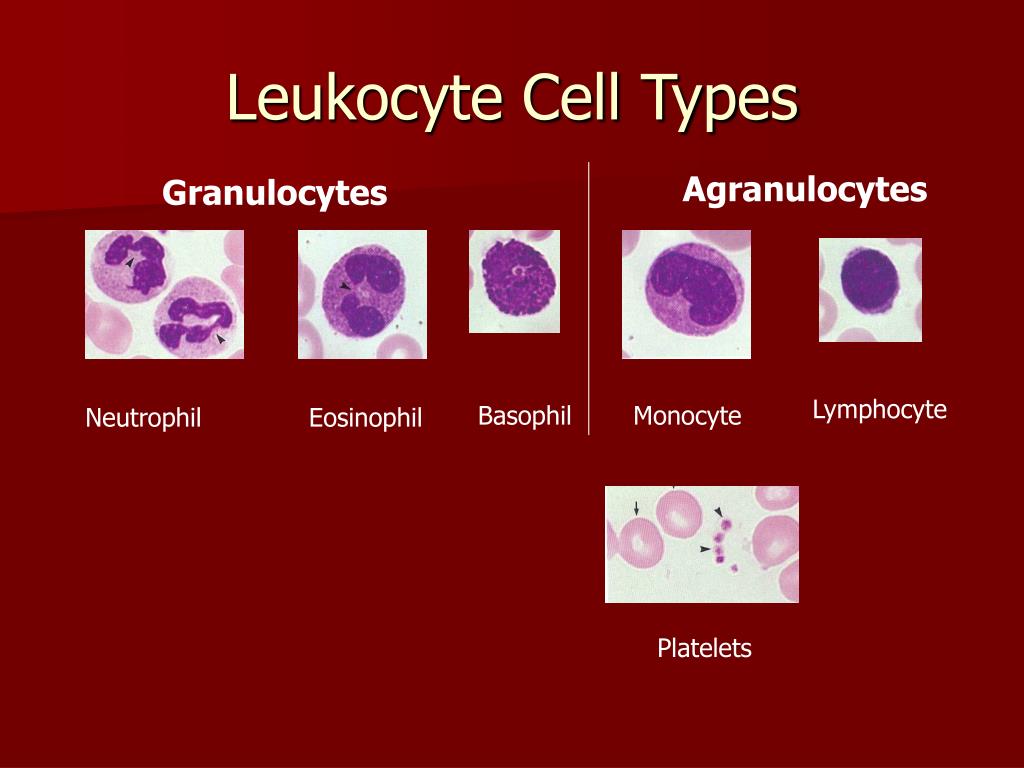 This doesn’t affect how well the platelets work, though.
This doesn’t affect how well the platelets work, though.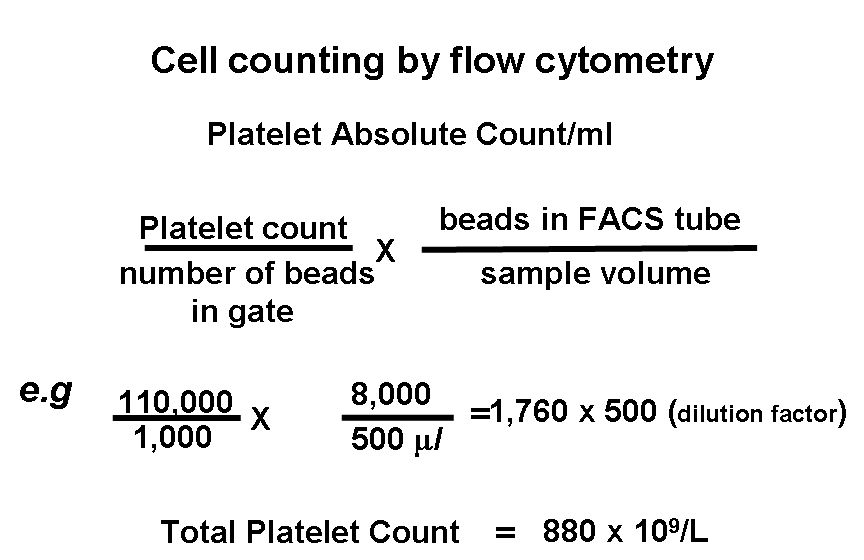
 The hemoglobin in the red blood cell carries oxygen to all parts of your body to give you energy. If your red blood cell count is low (anemia), you may look pale and feel tired. If your hemoglobin is very low, you may need a blood transfusion.
The hemoglobin in the red blood cell carries oxygen to all parts of your body to give you energy. If your red blood cell count is low (anemia), you may look pale and feel tired. If your hemoglobin is very low, you may need a blood transfusion.
